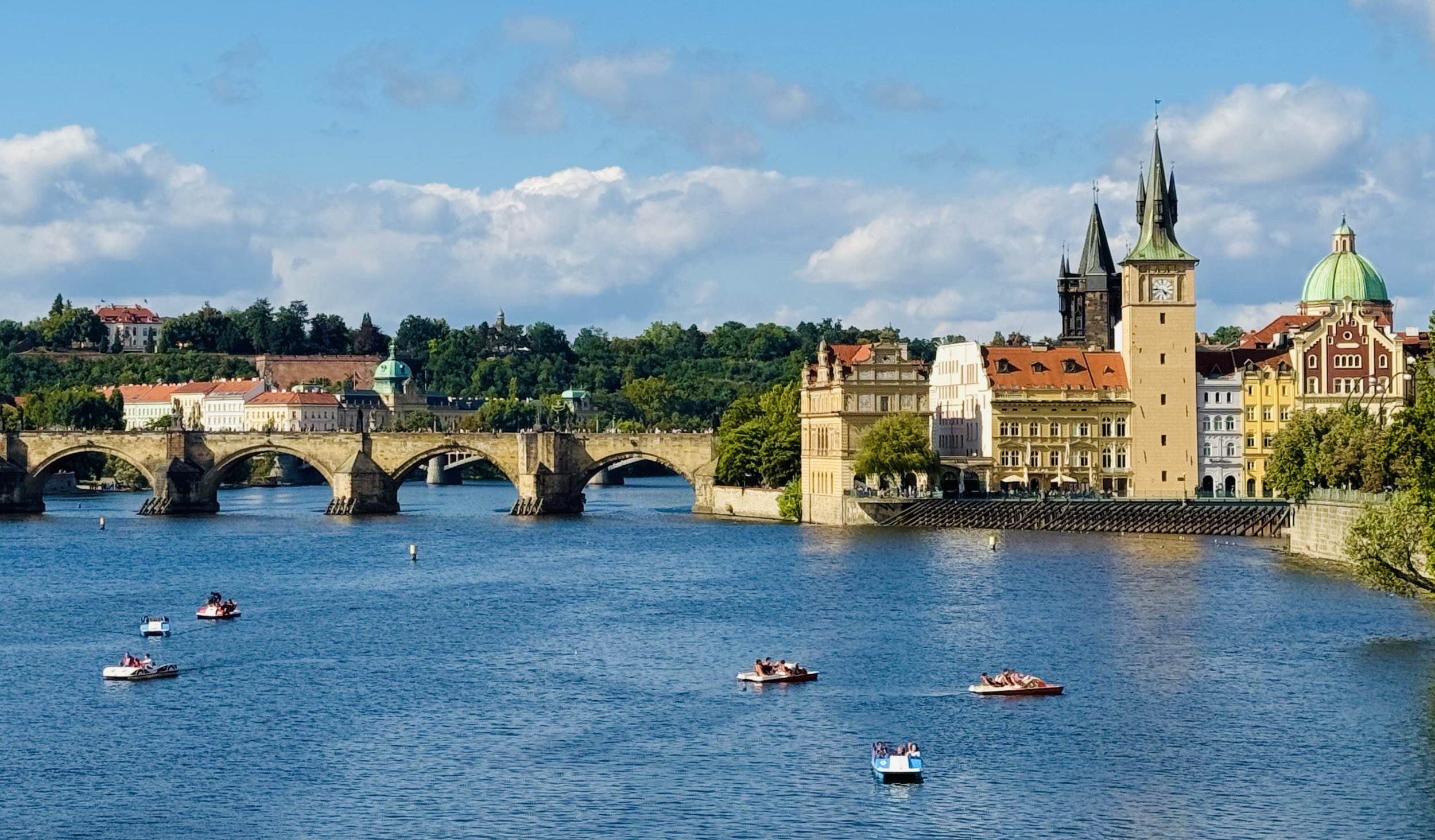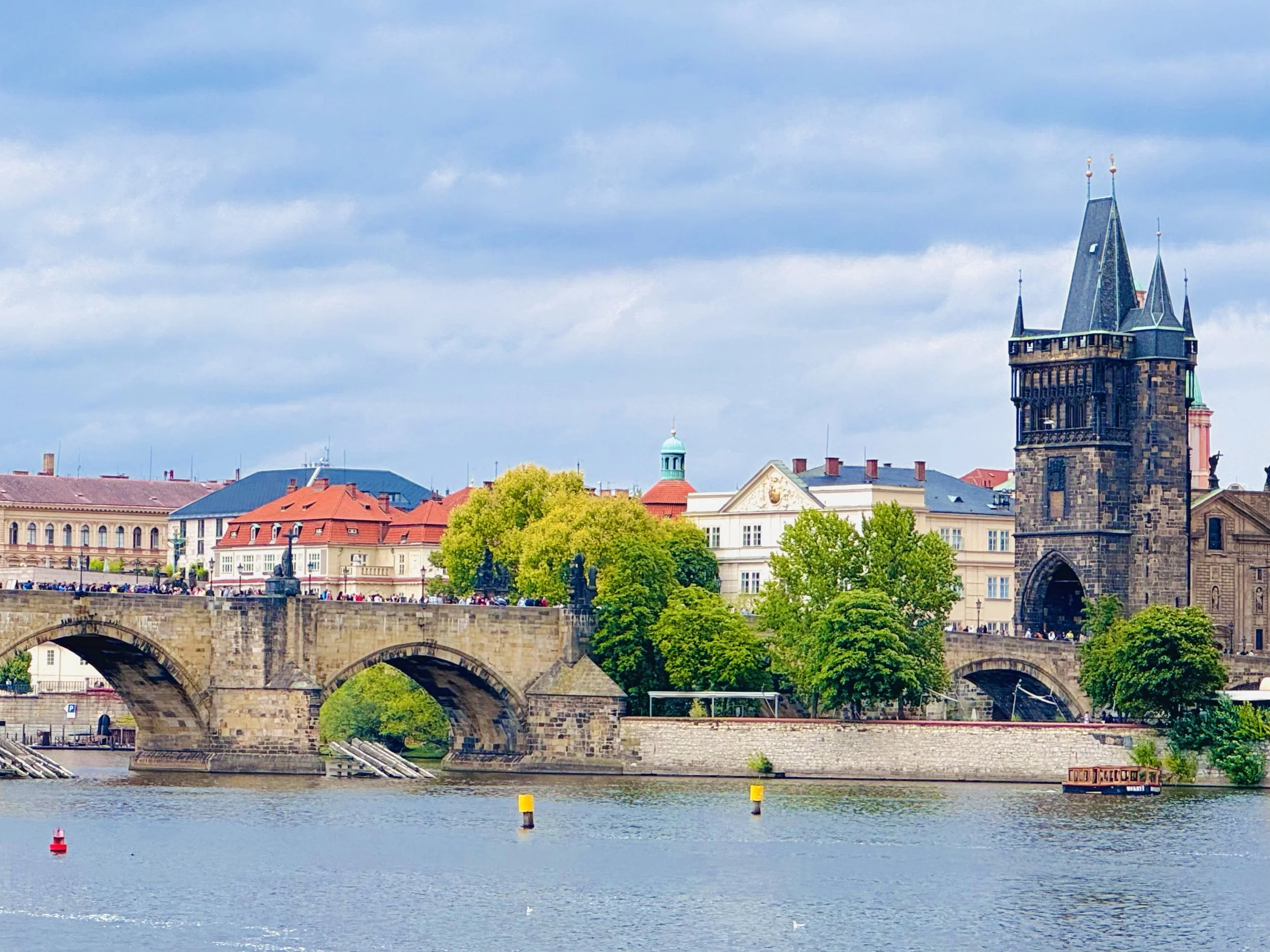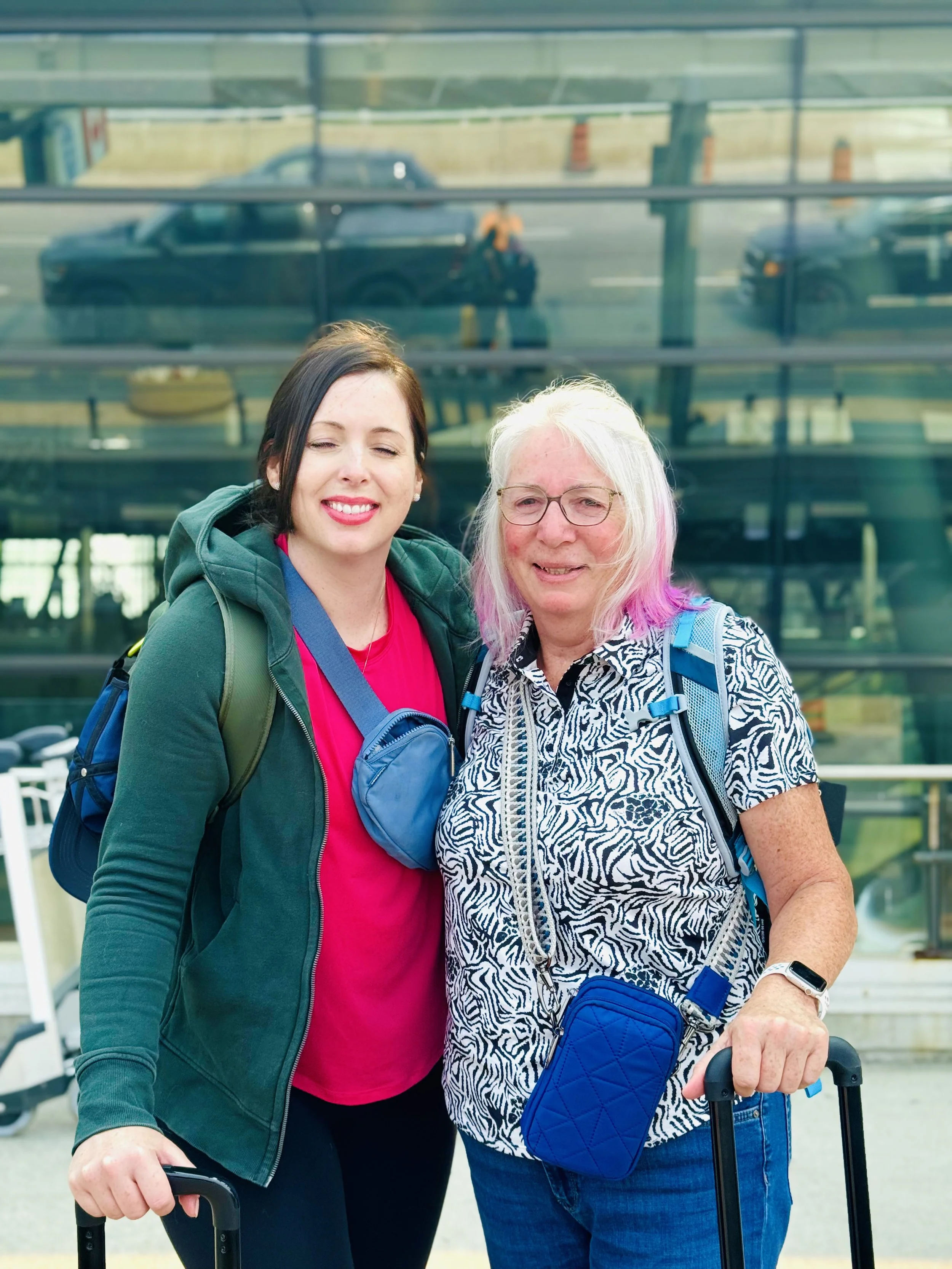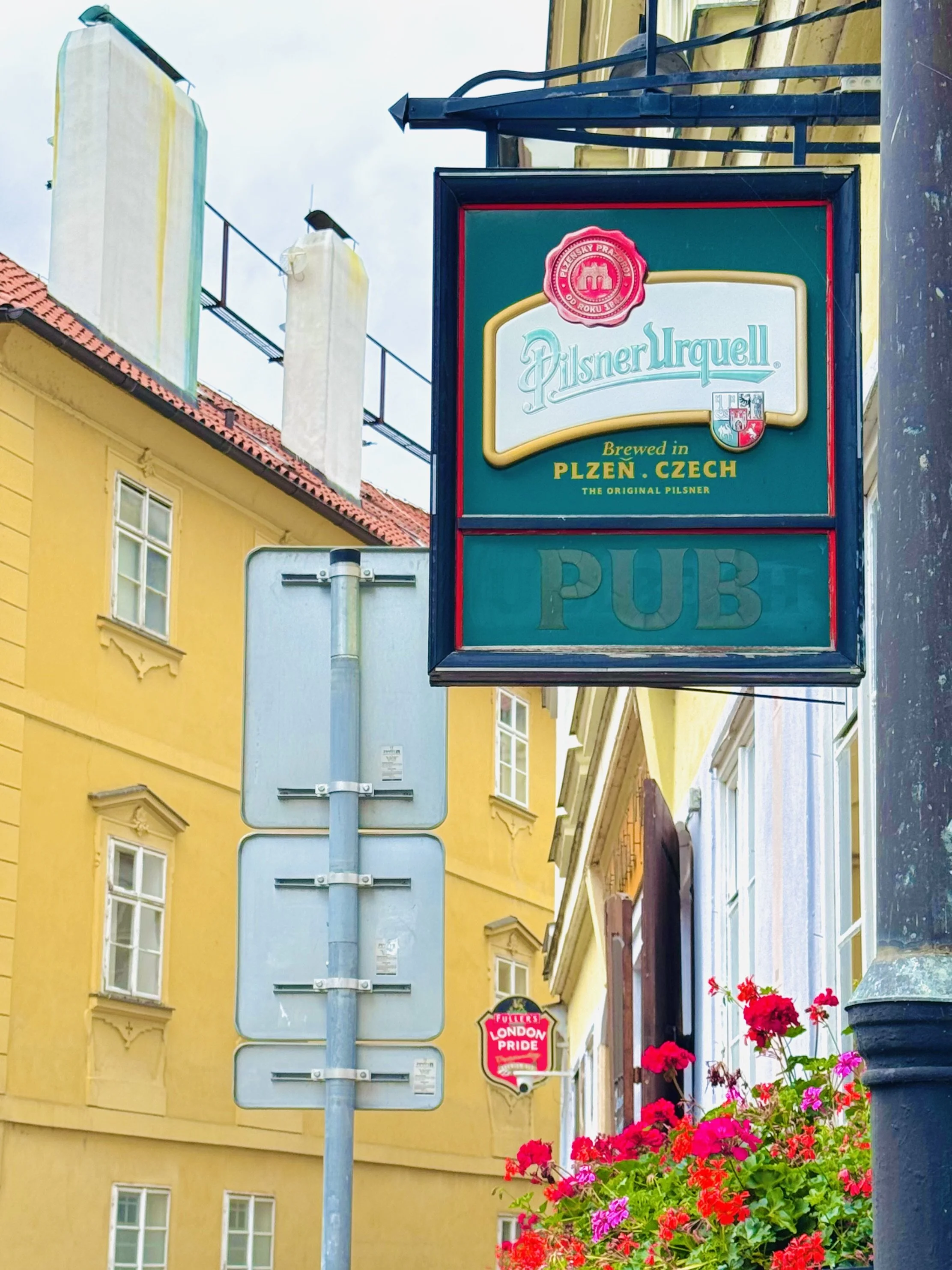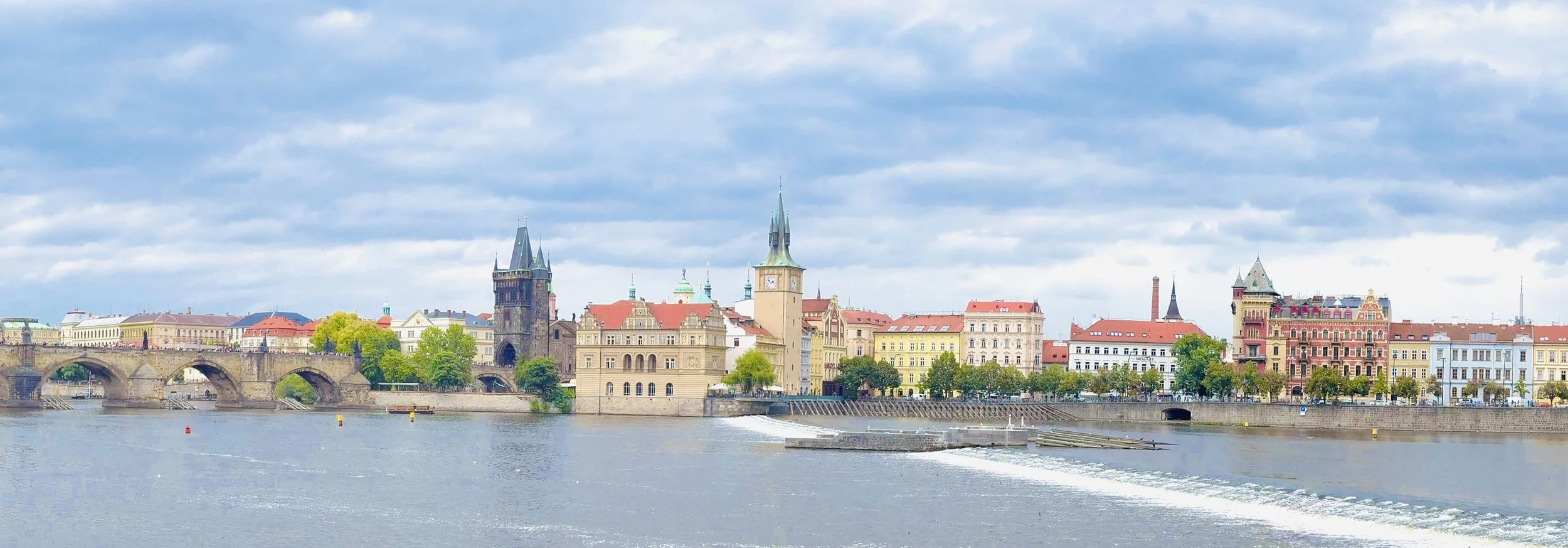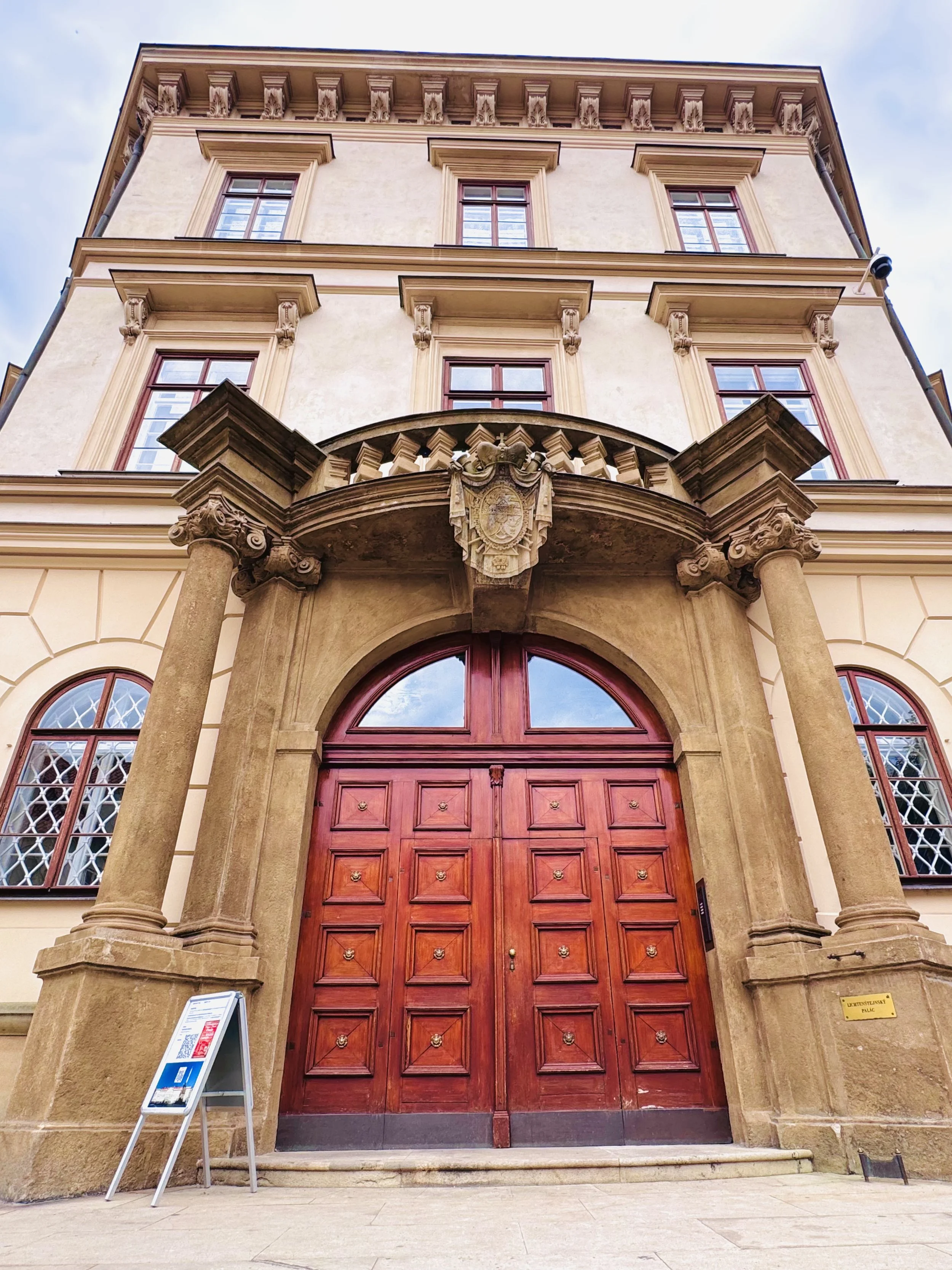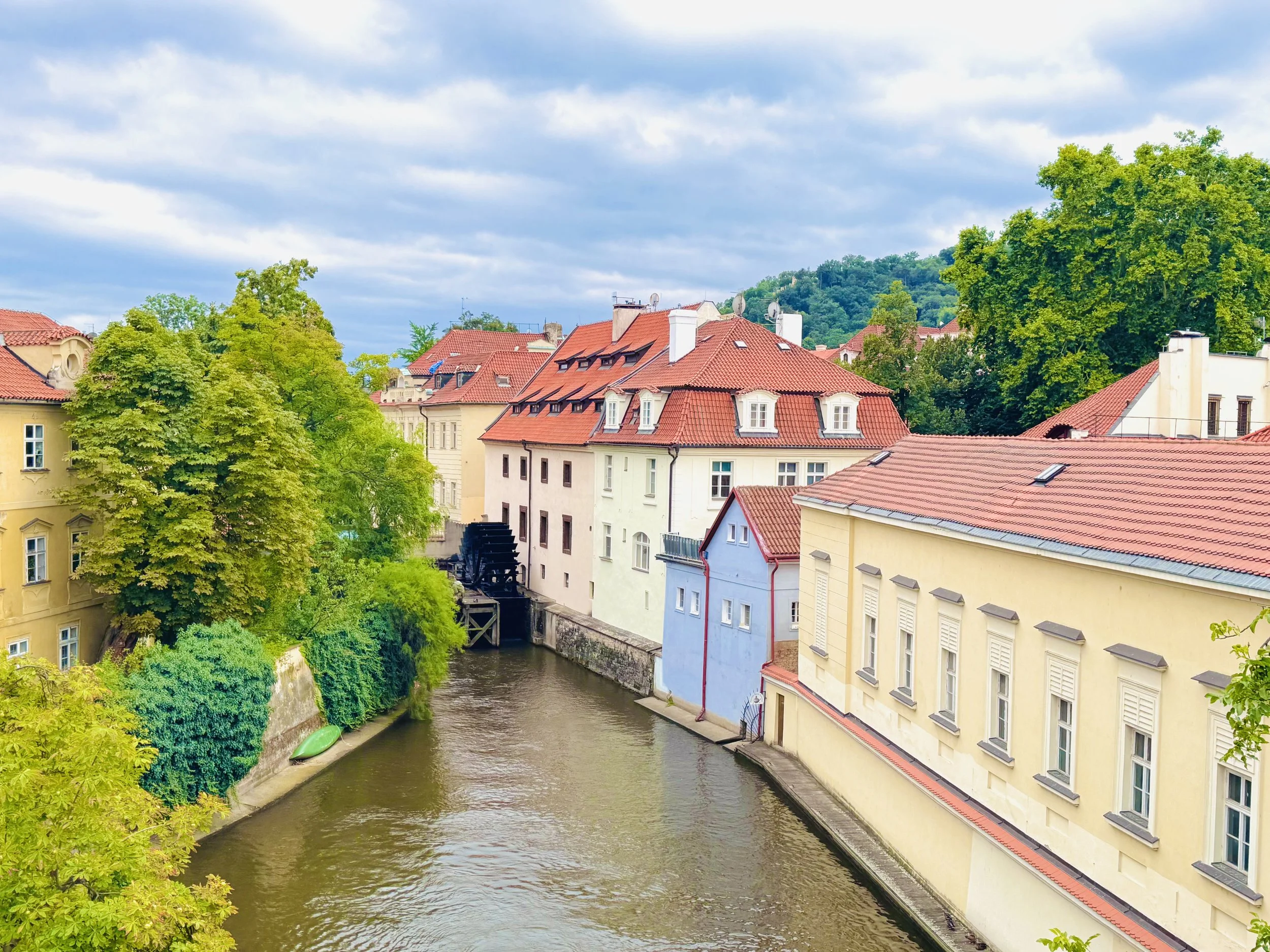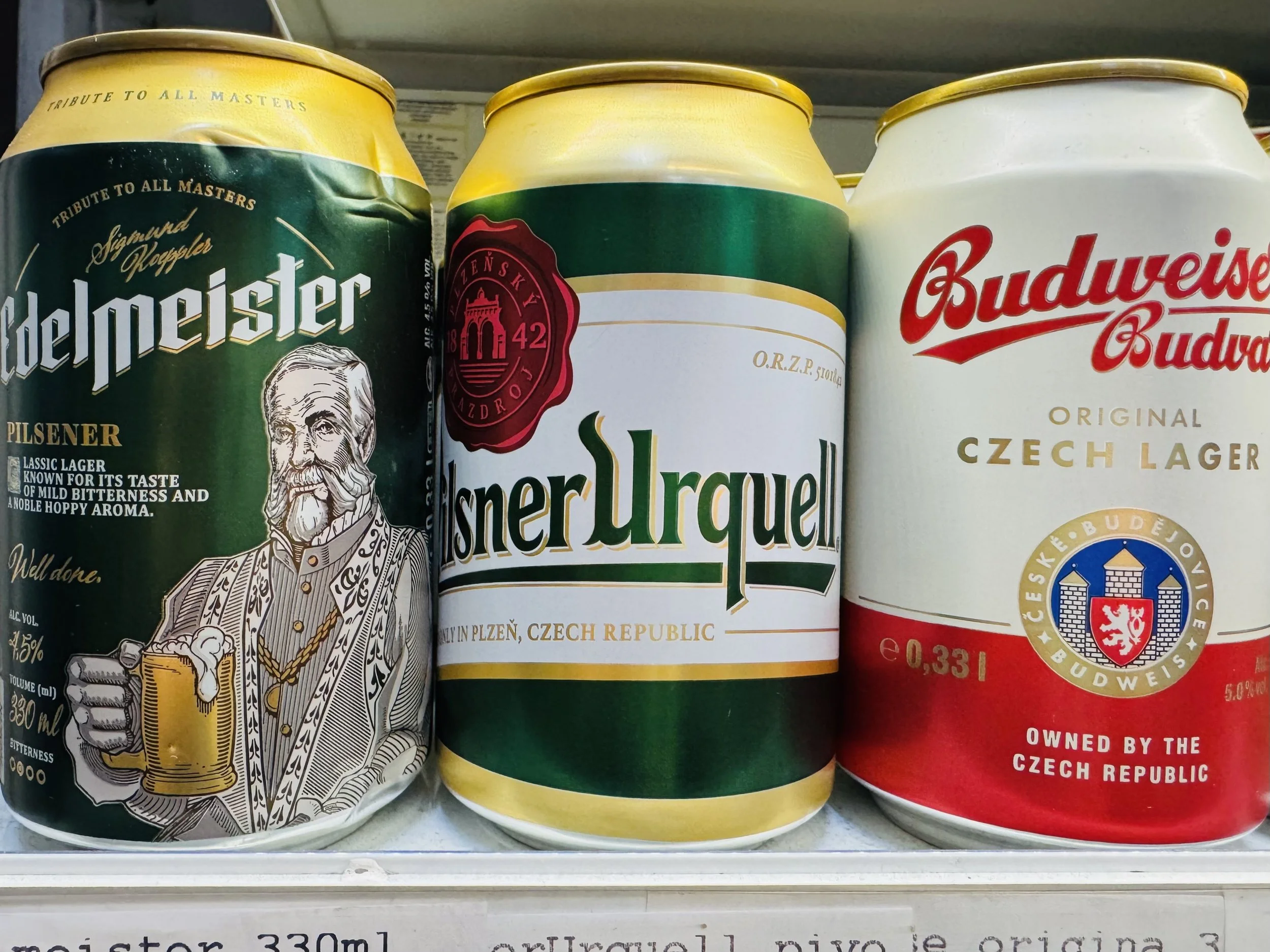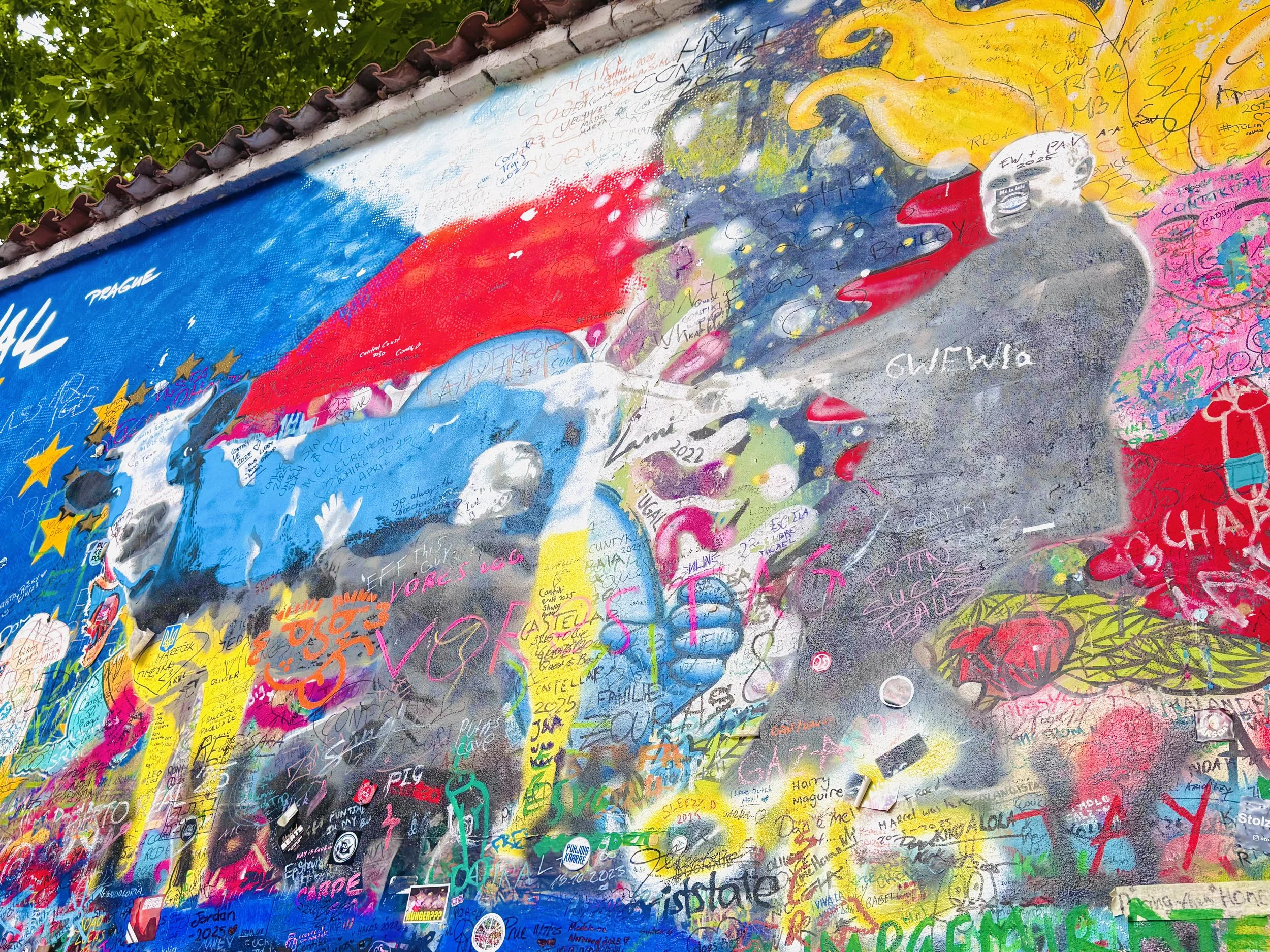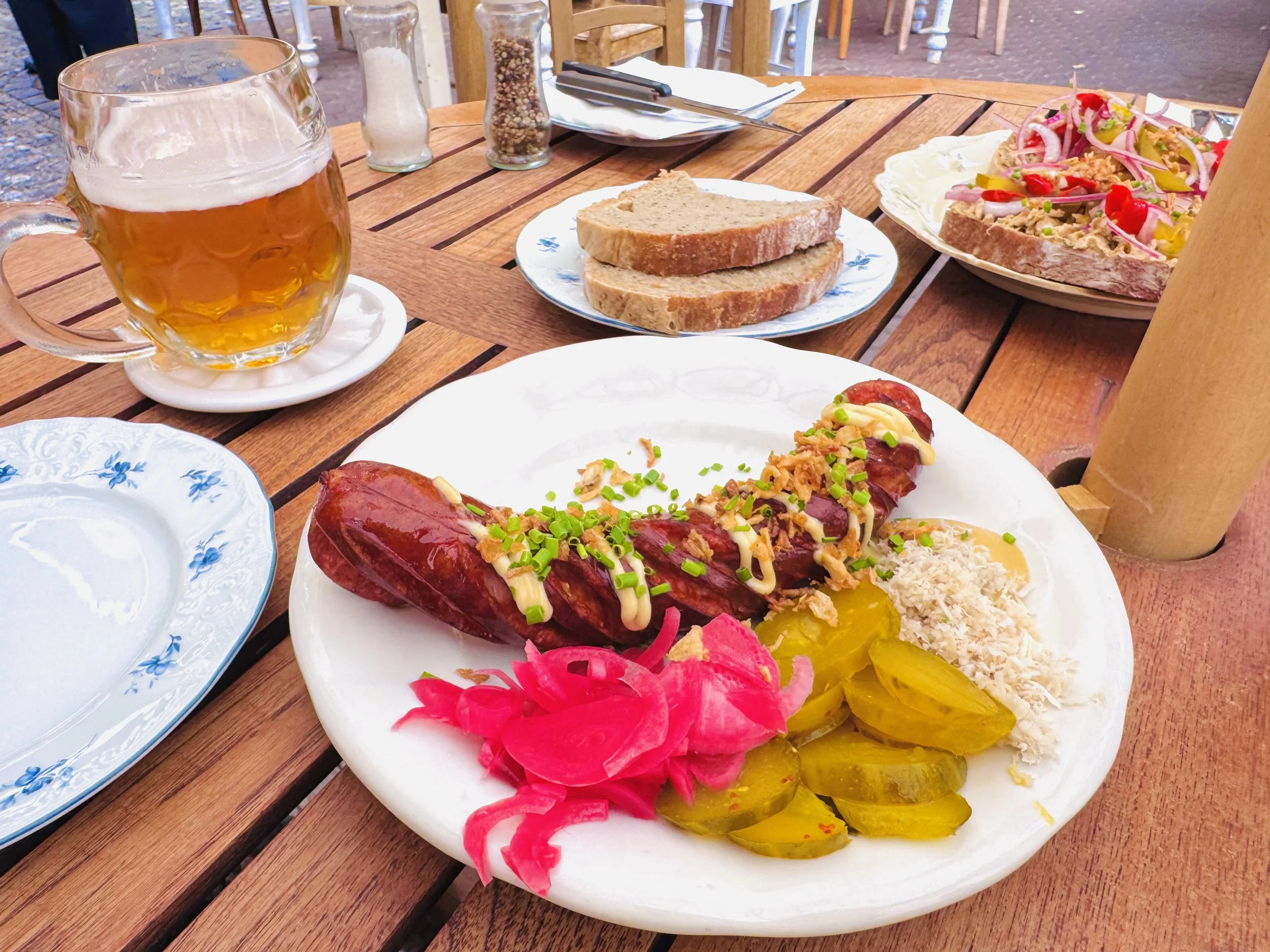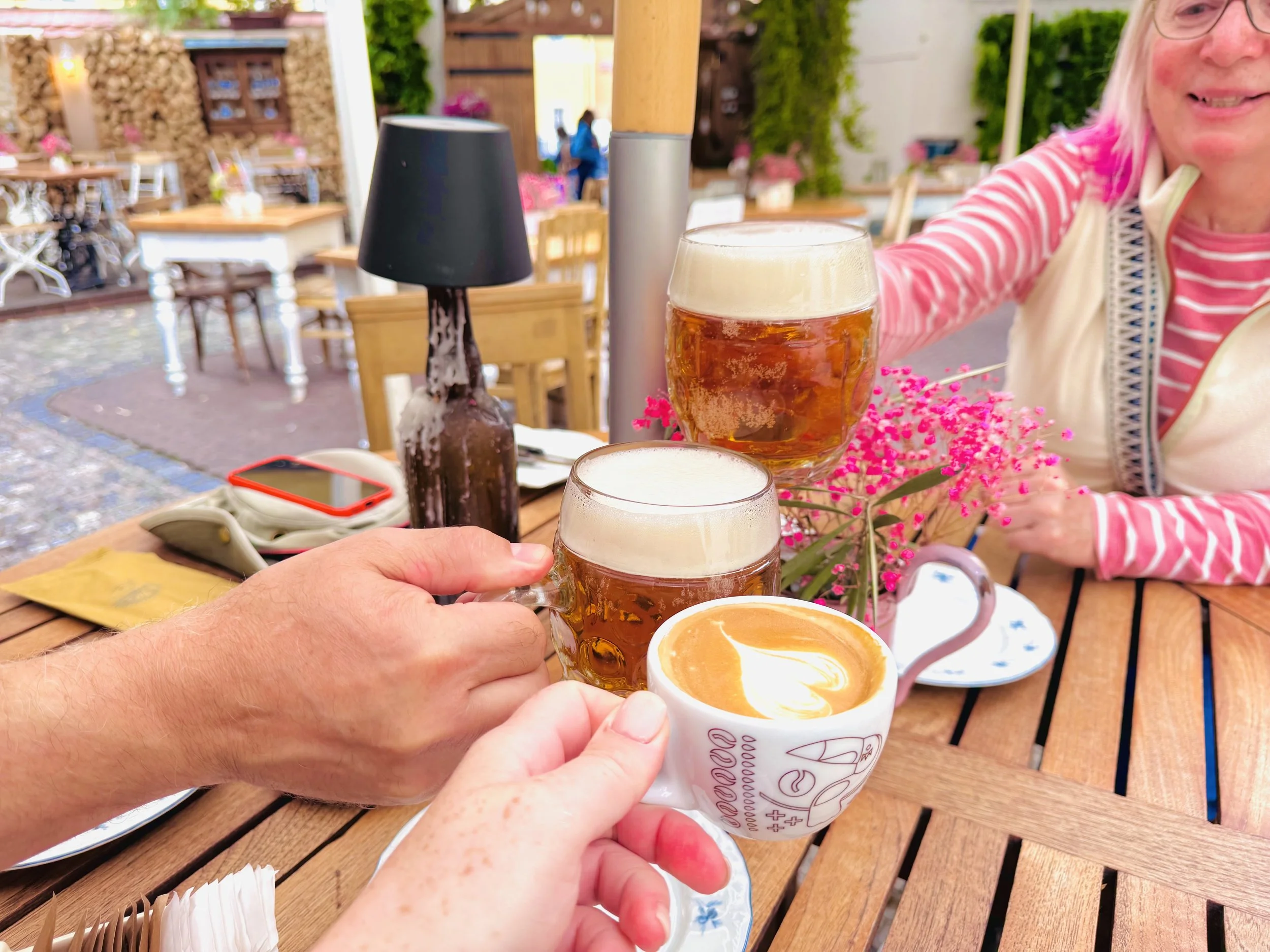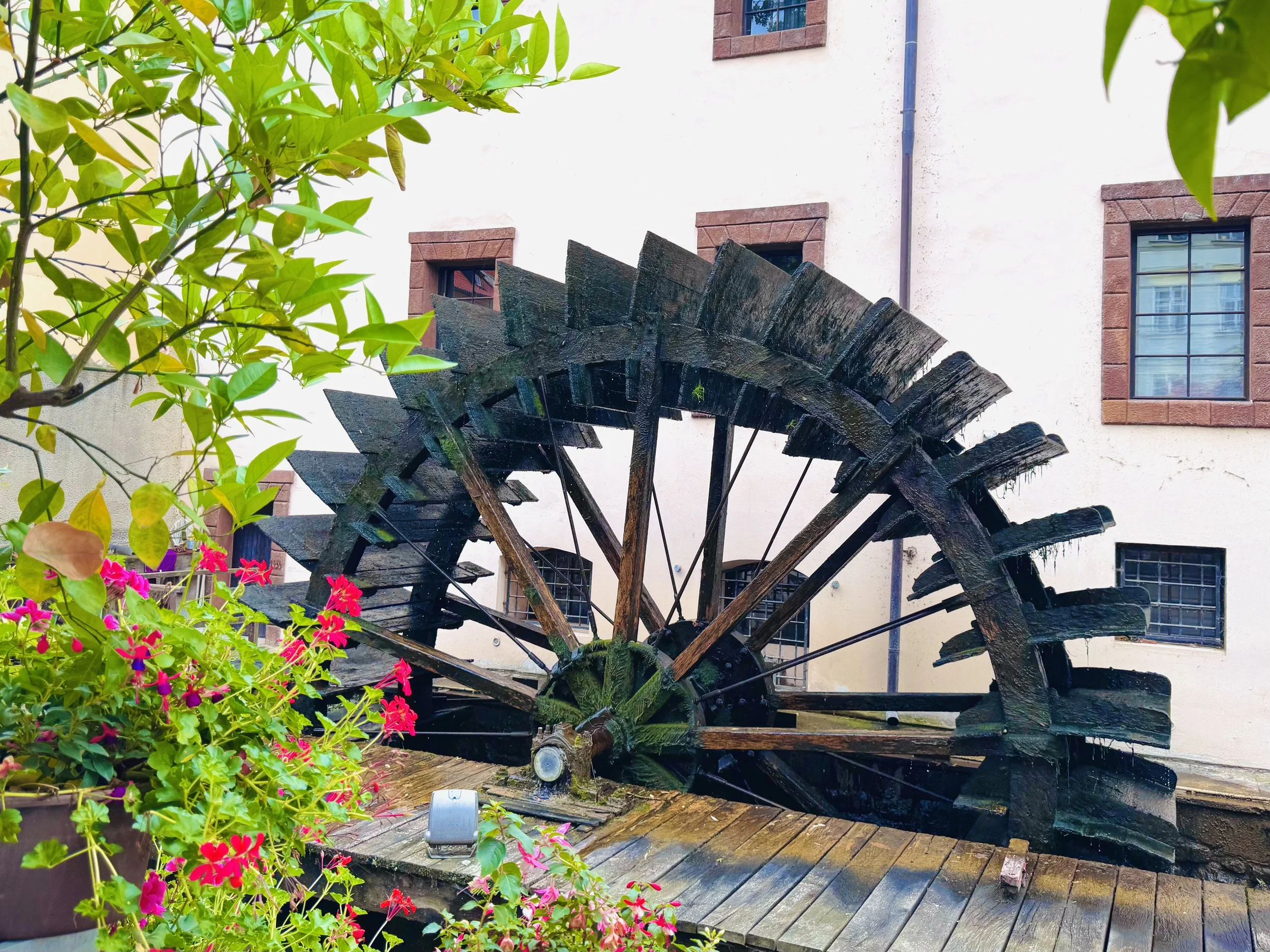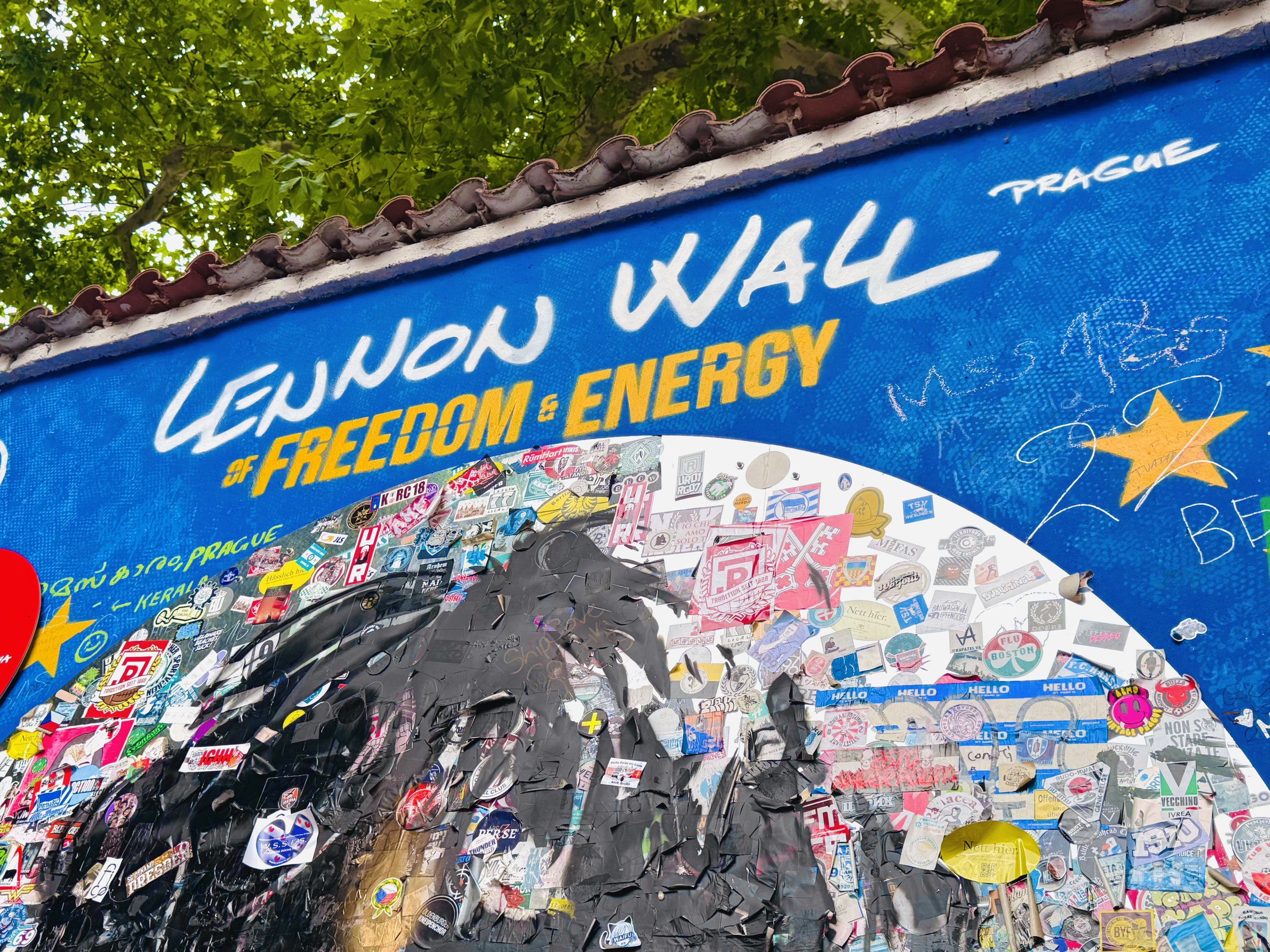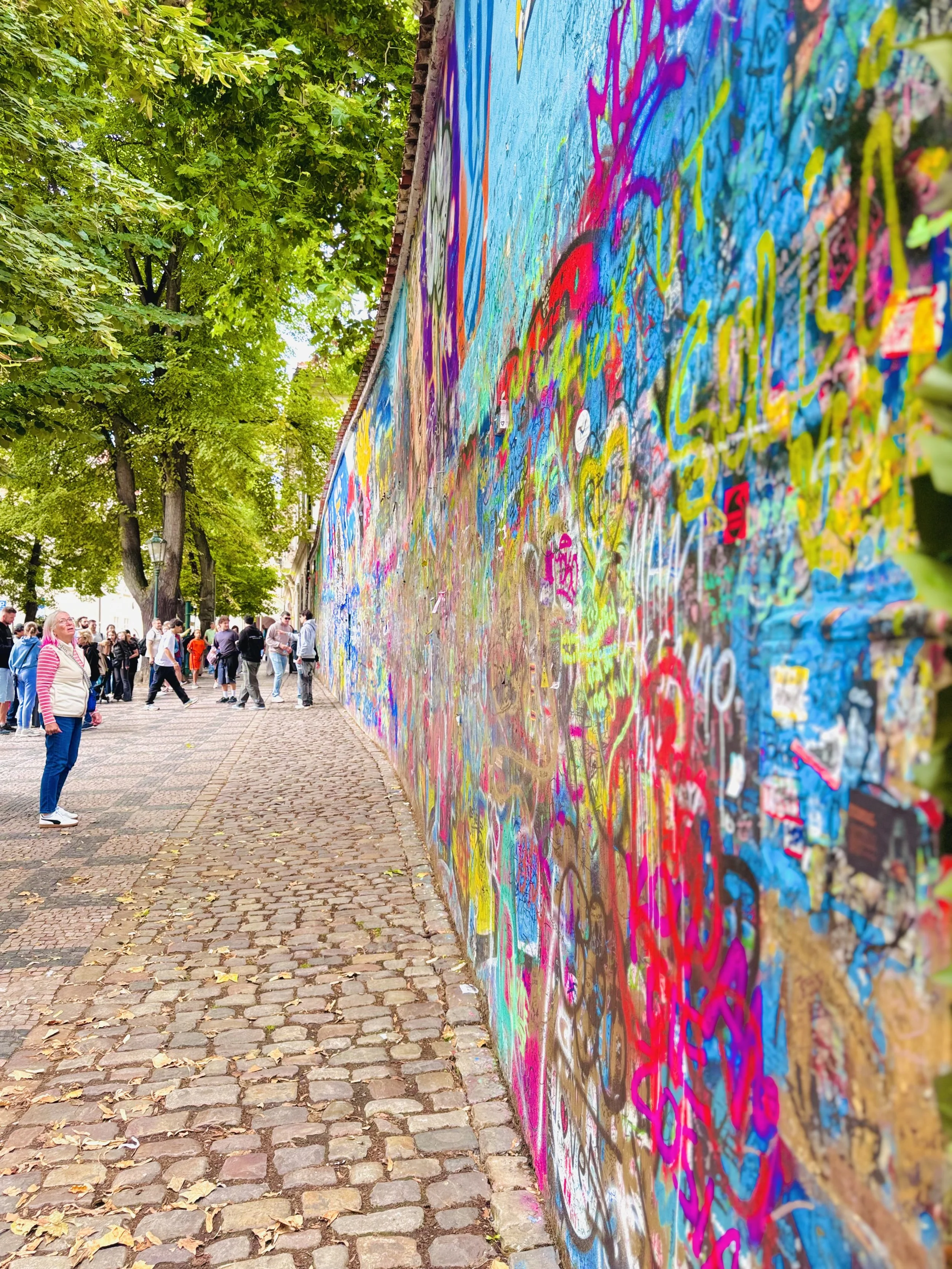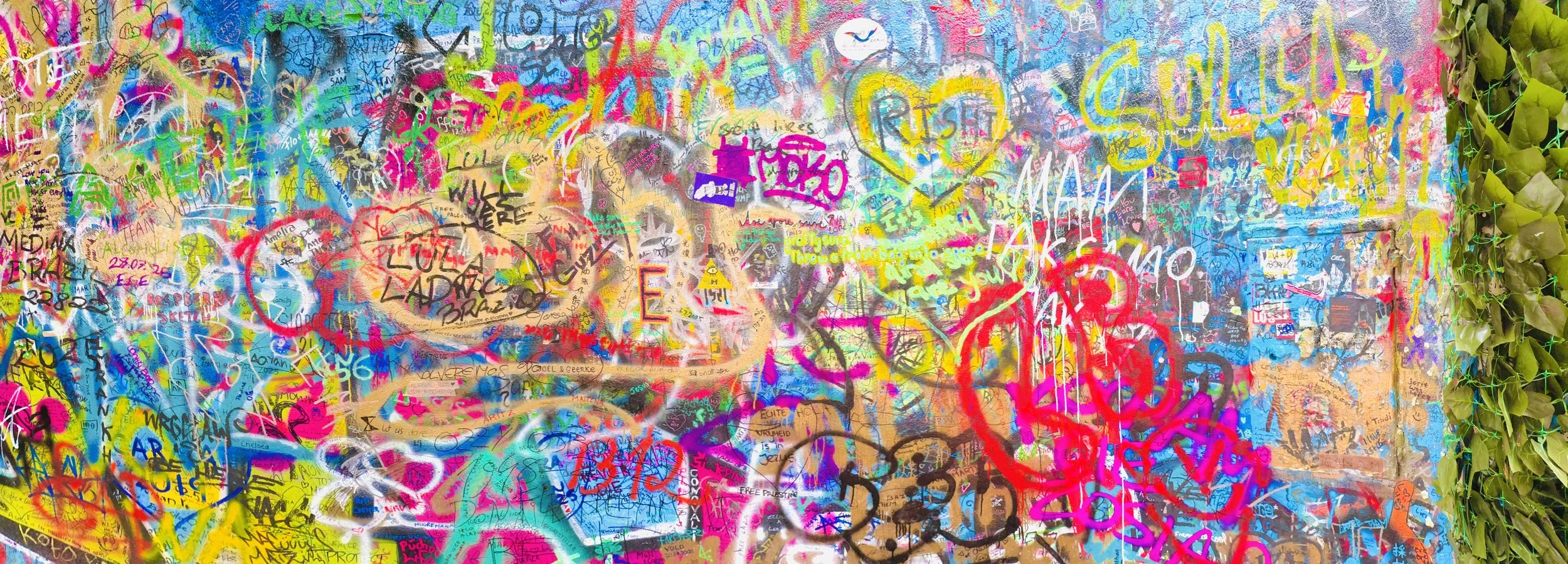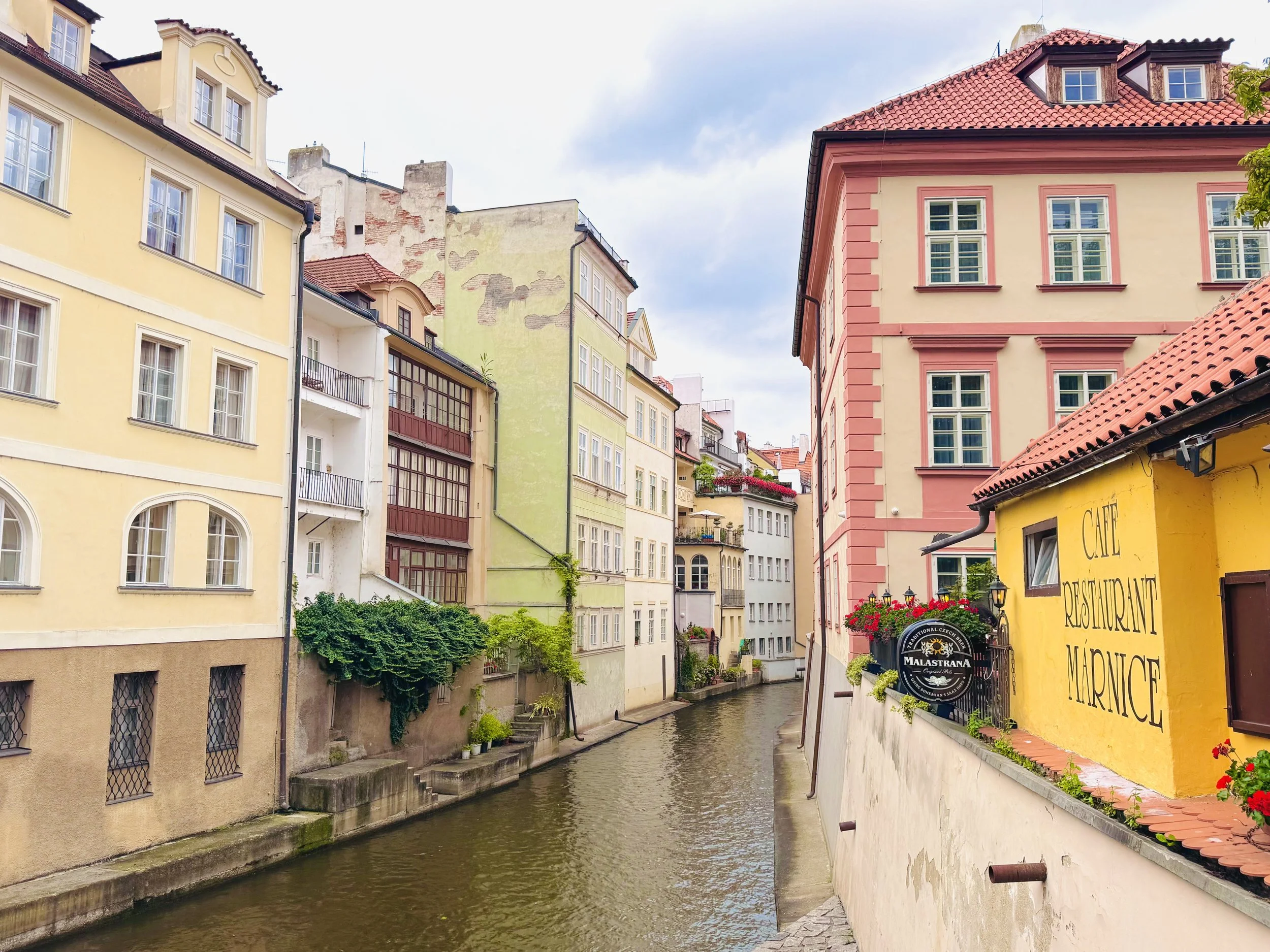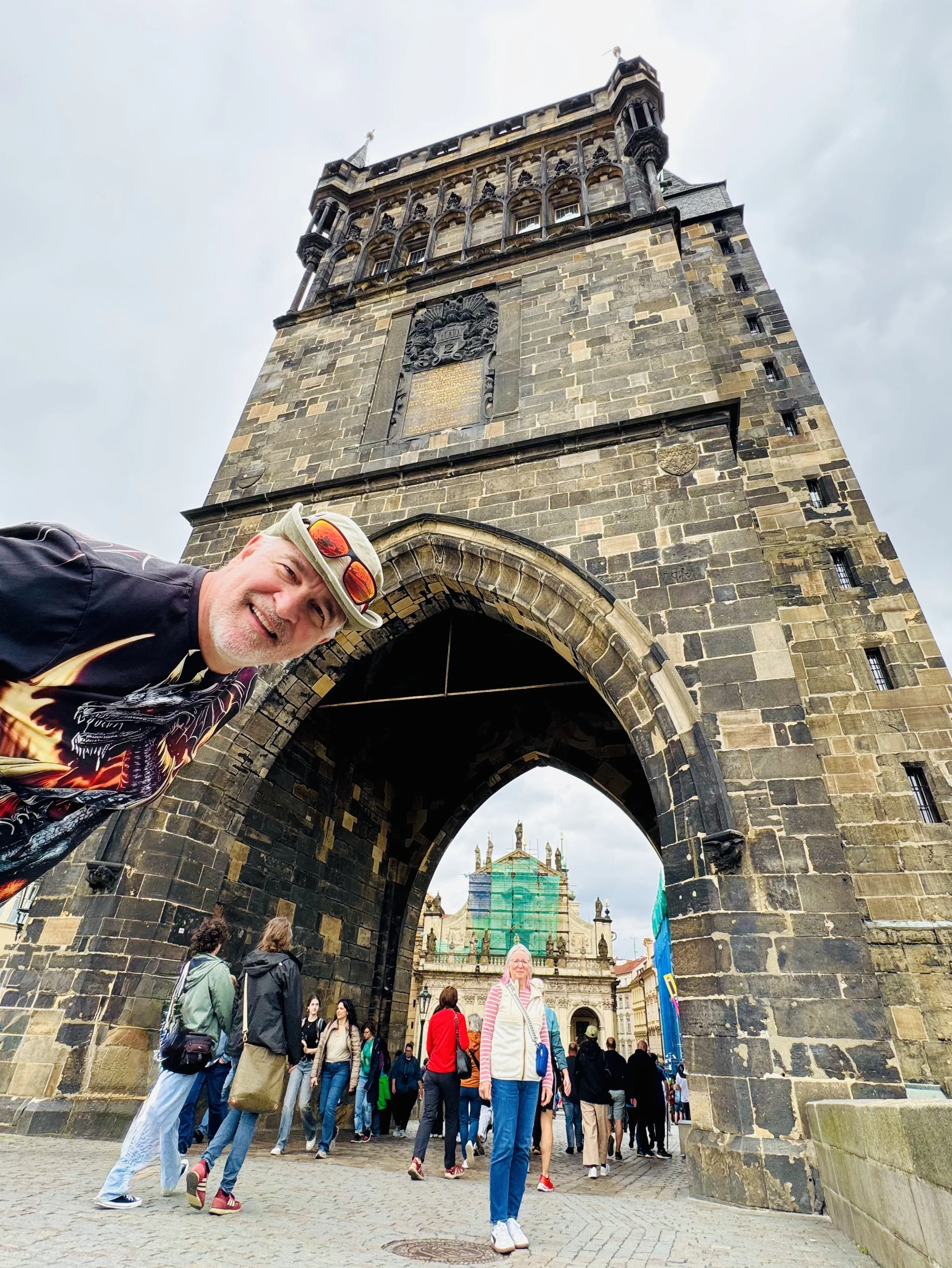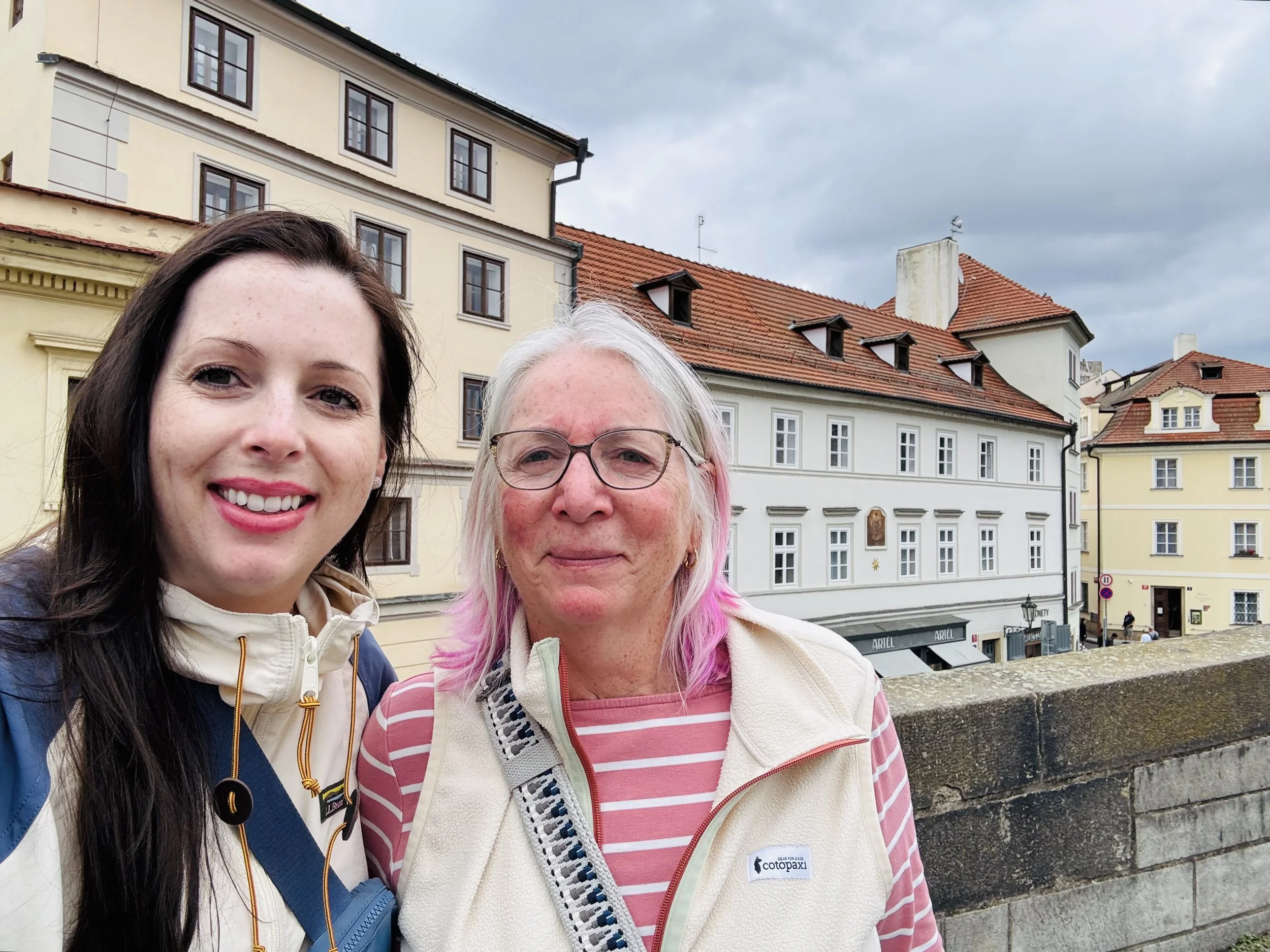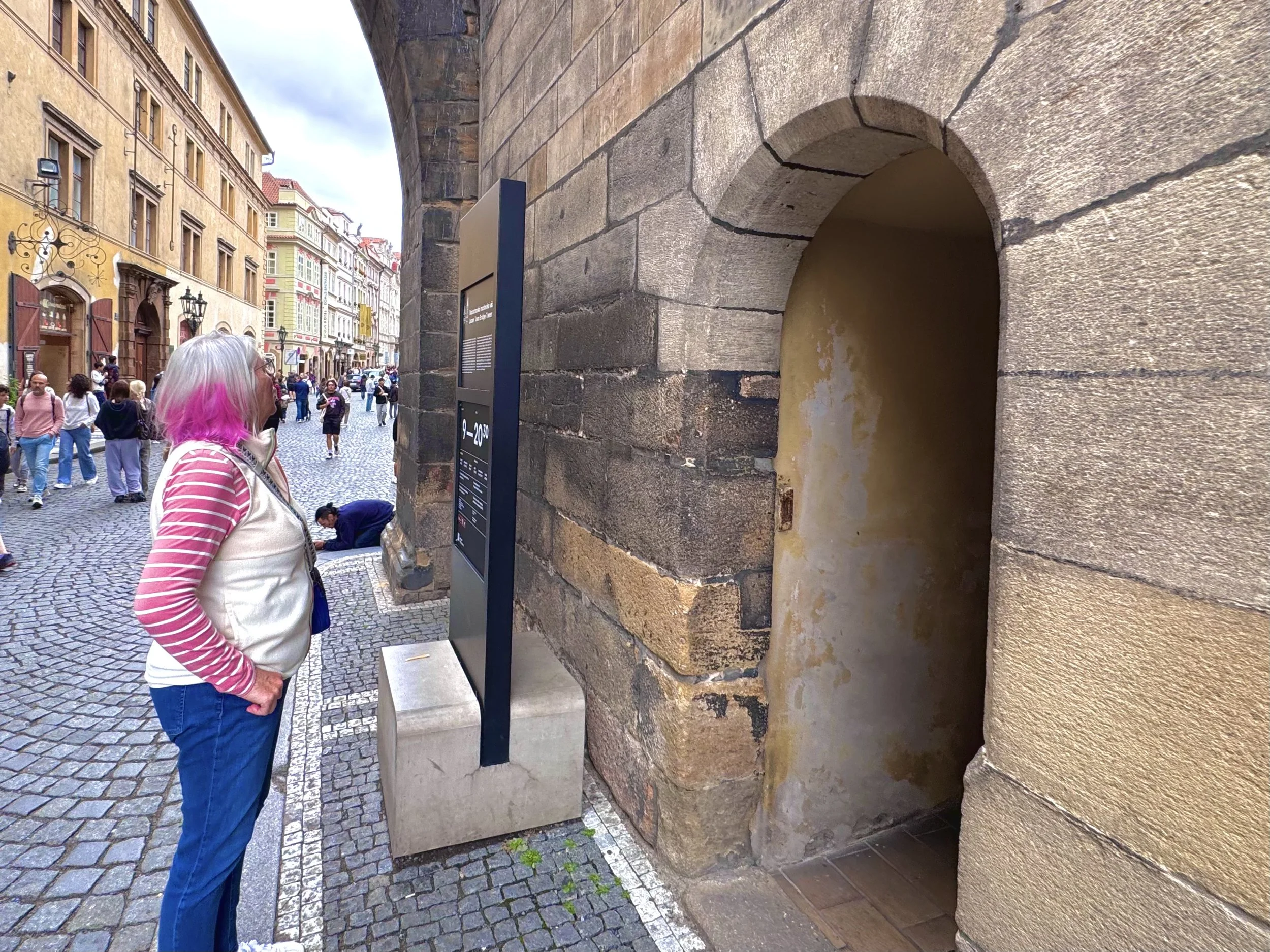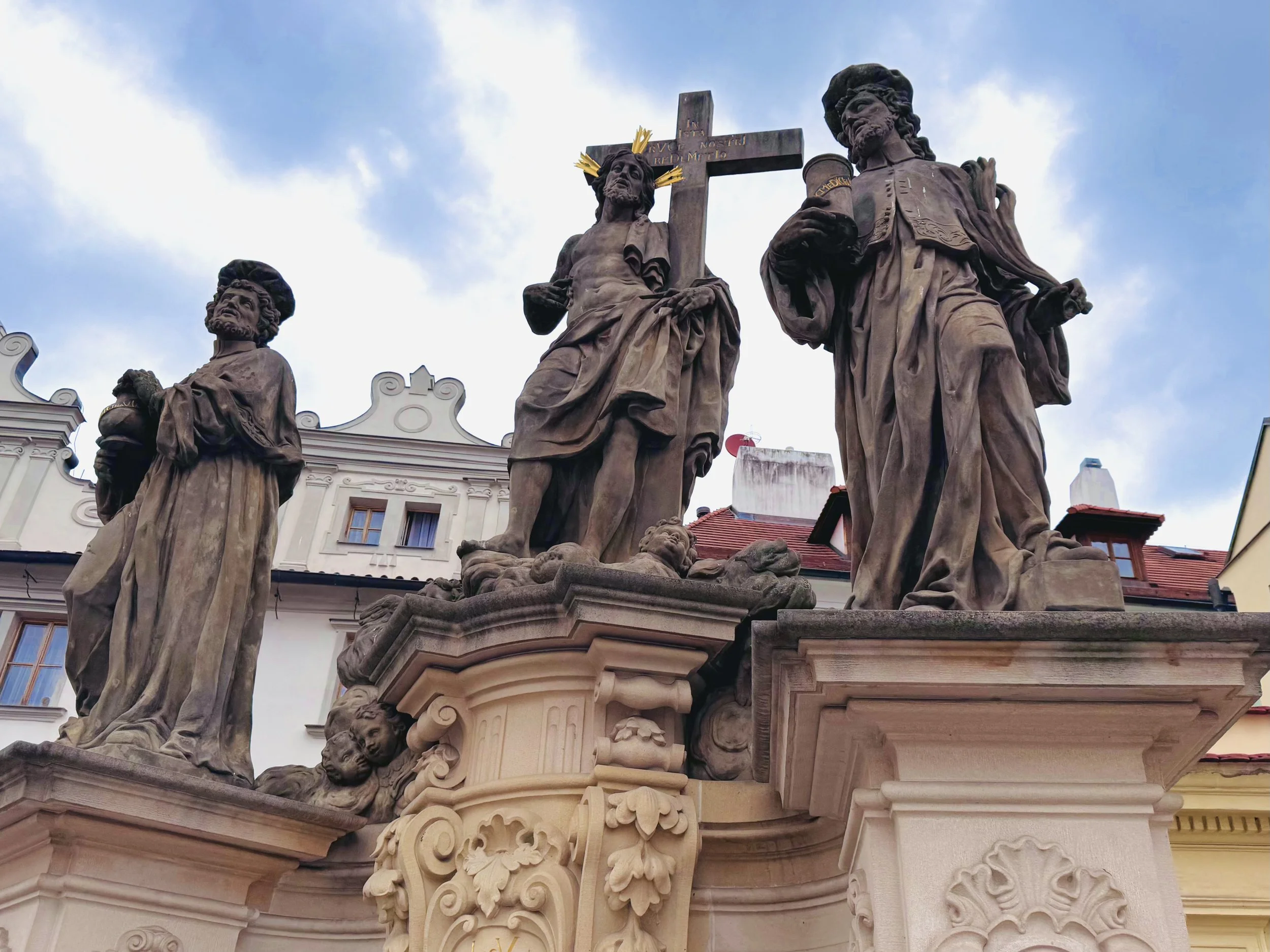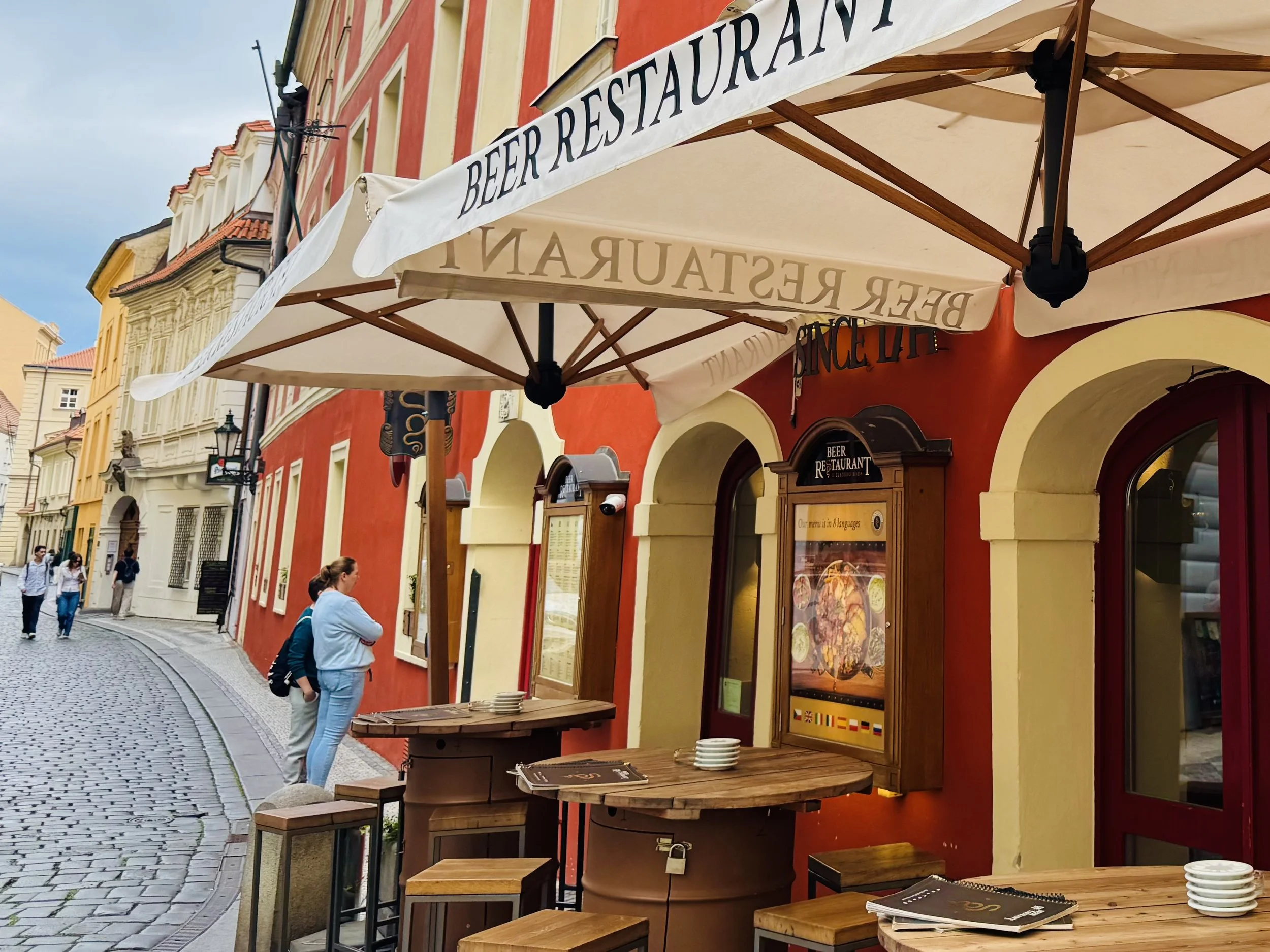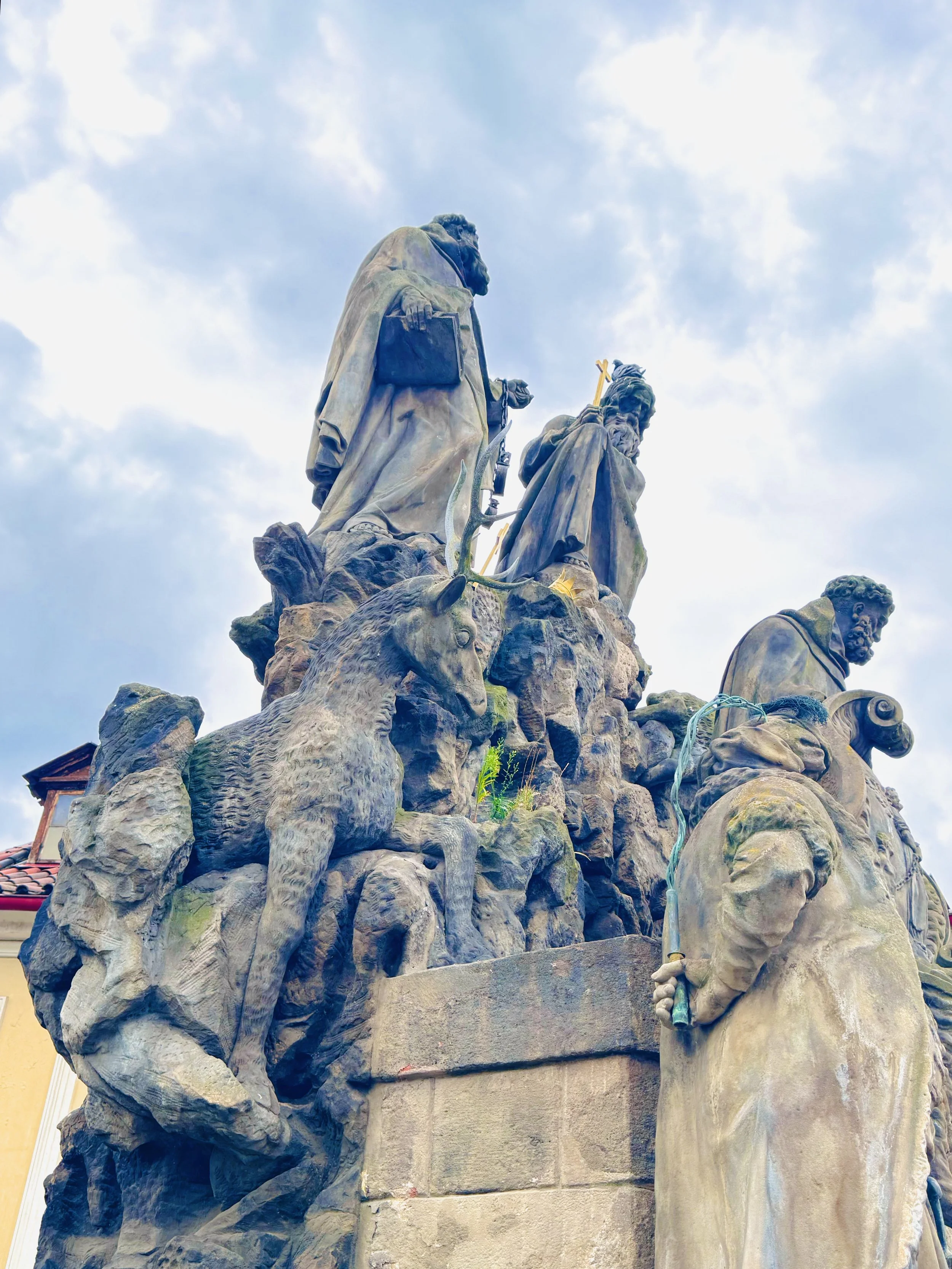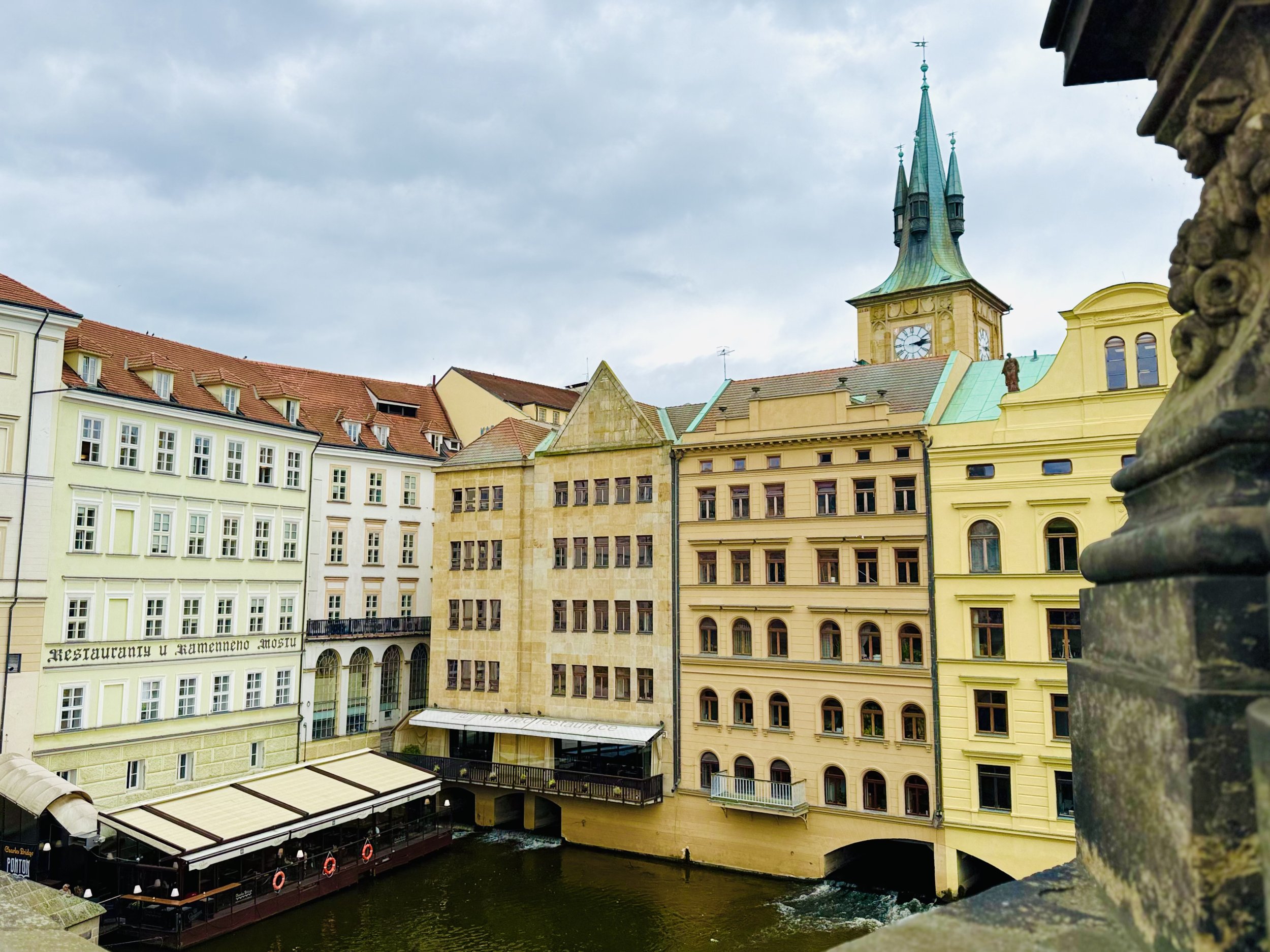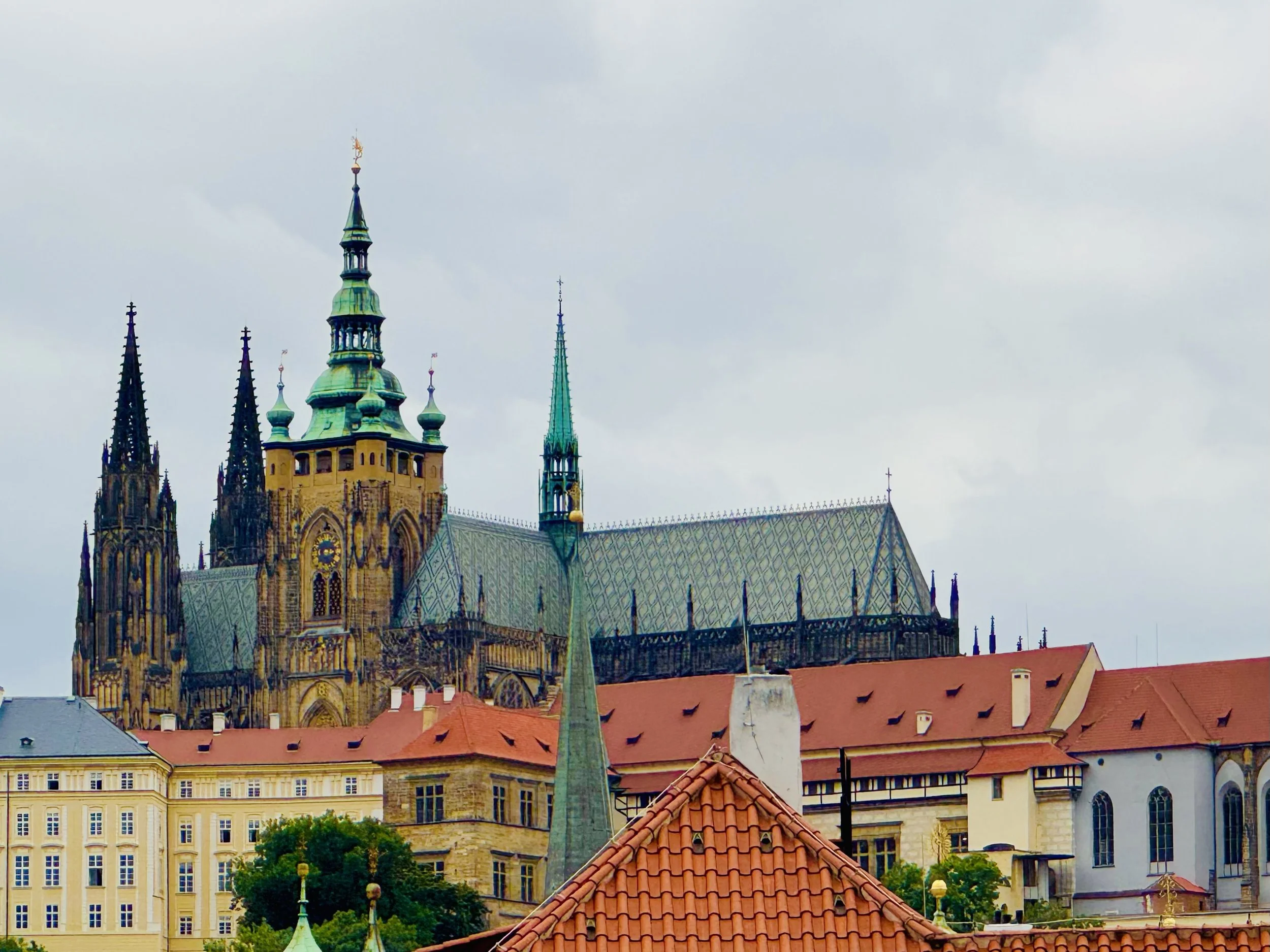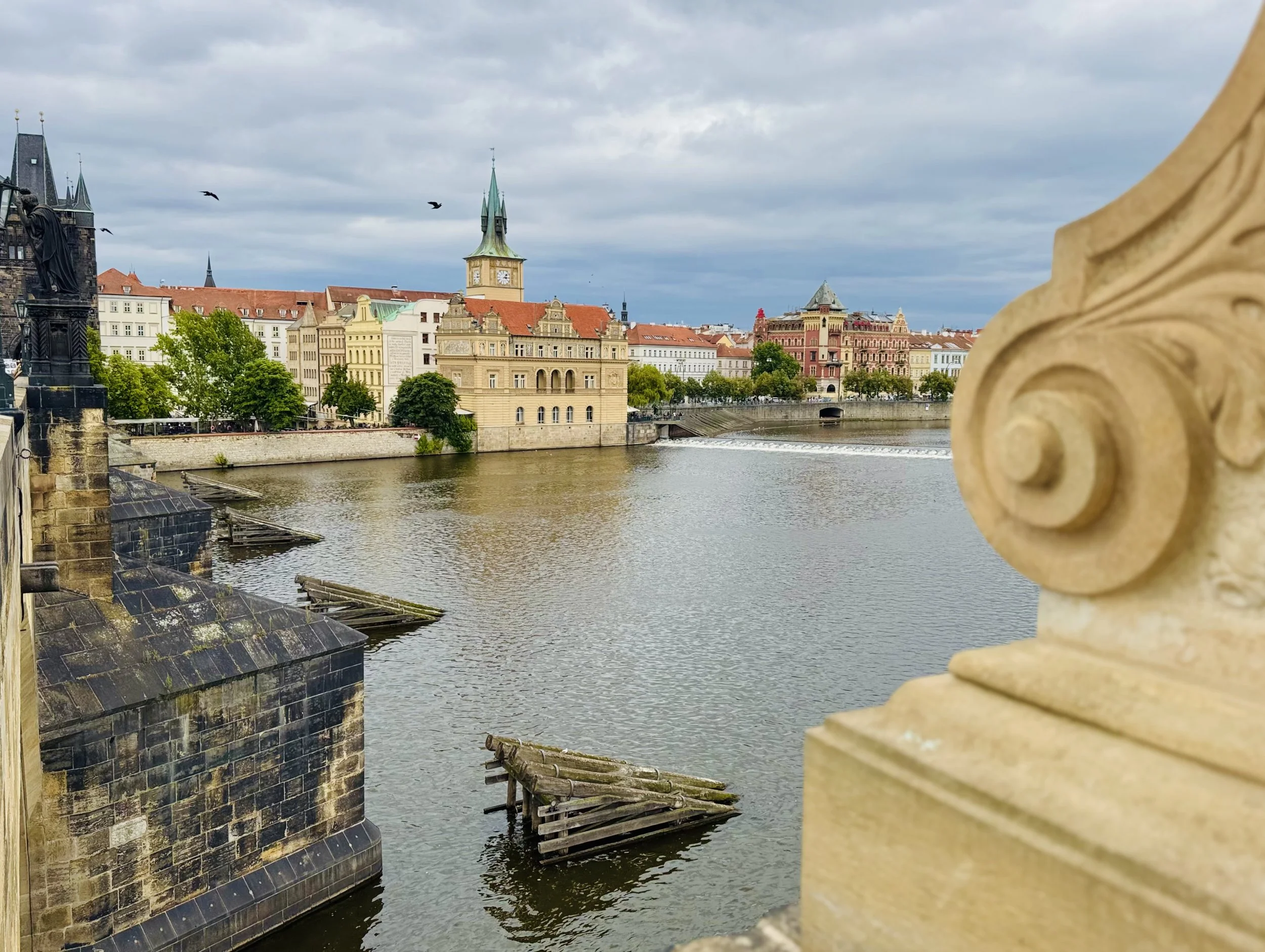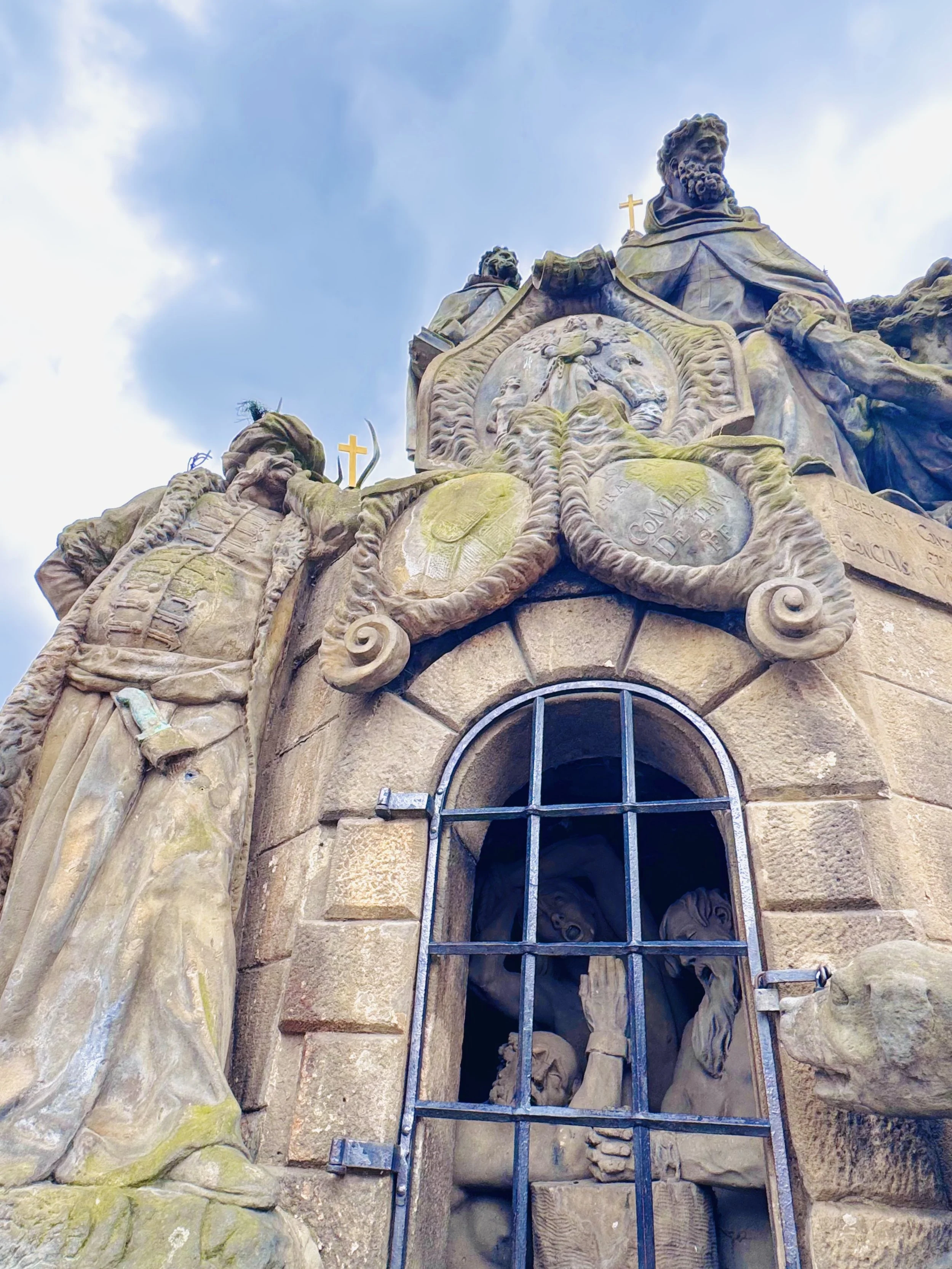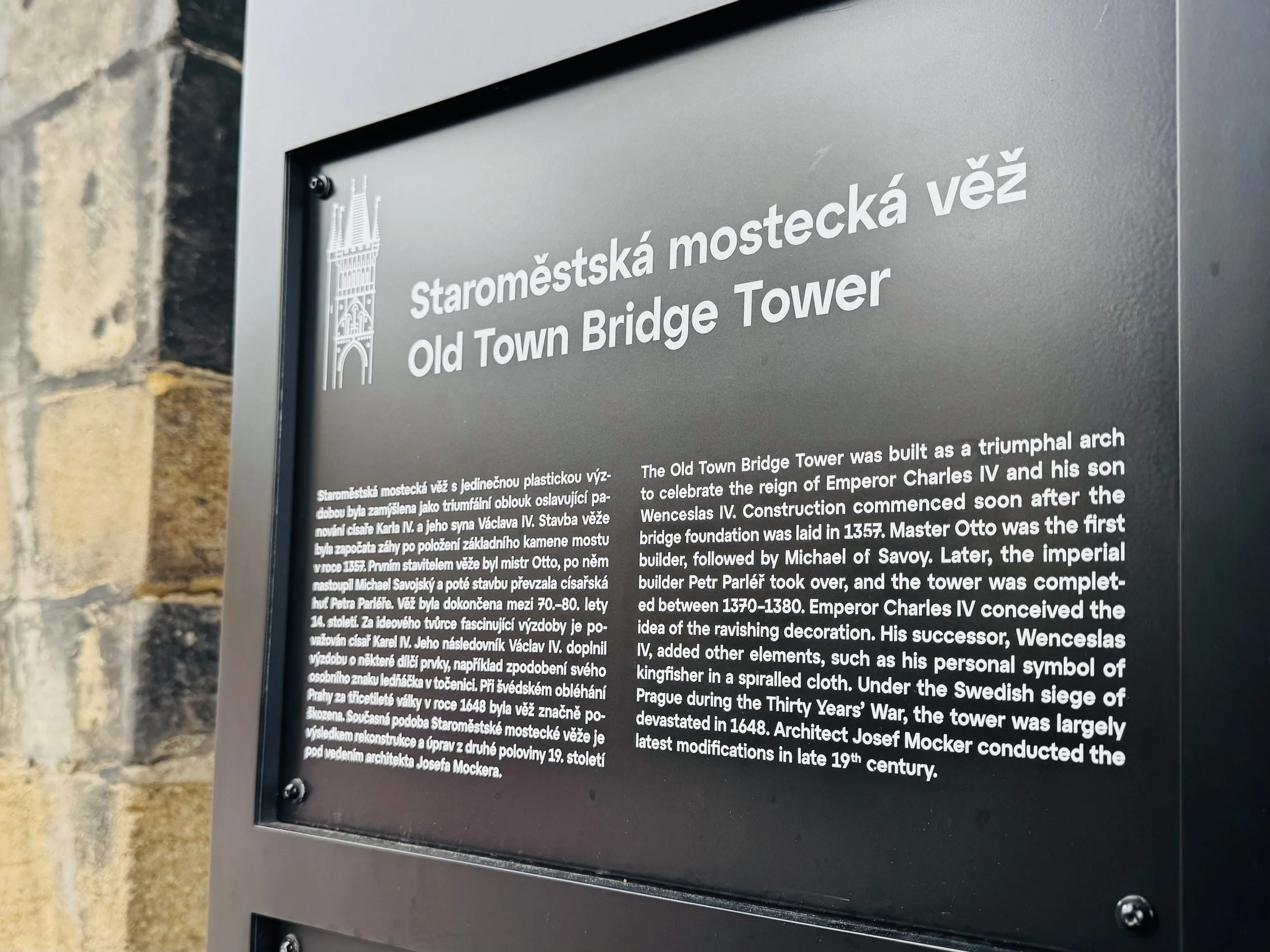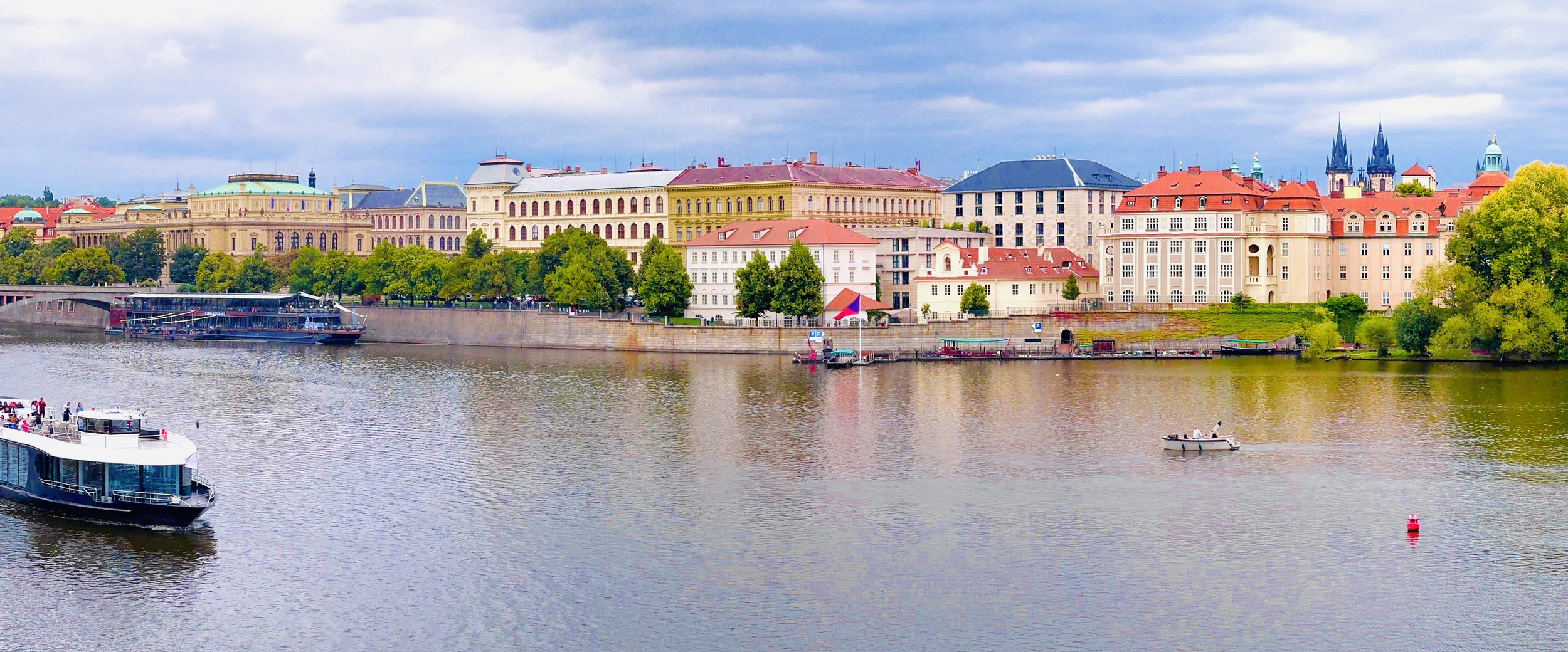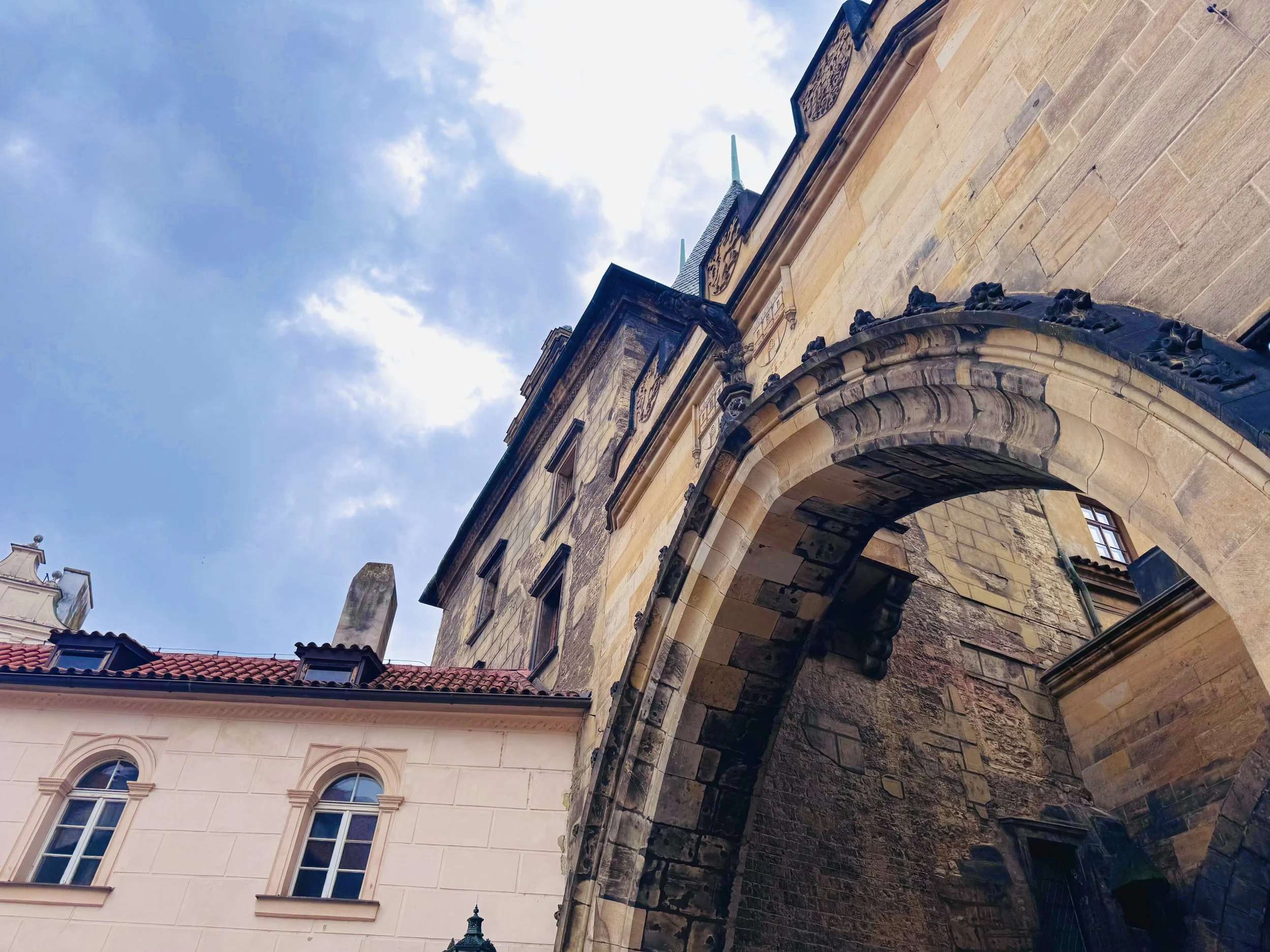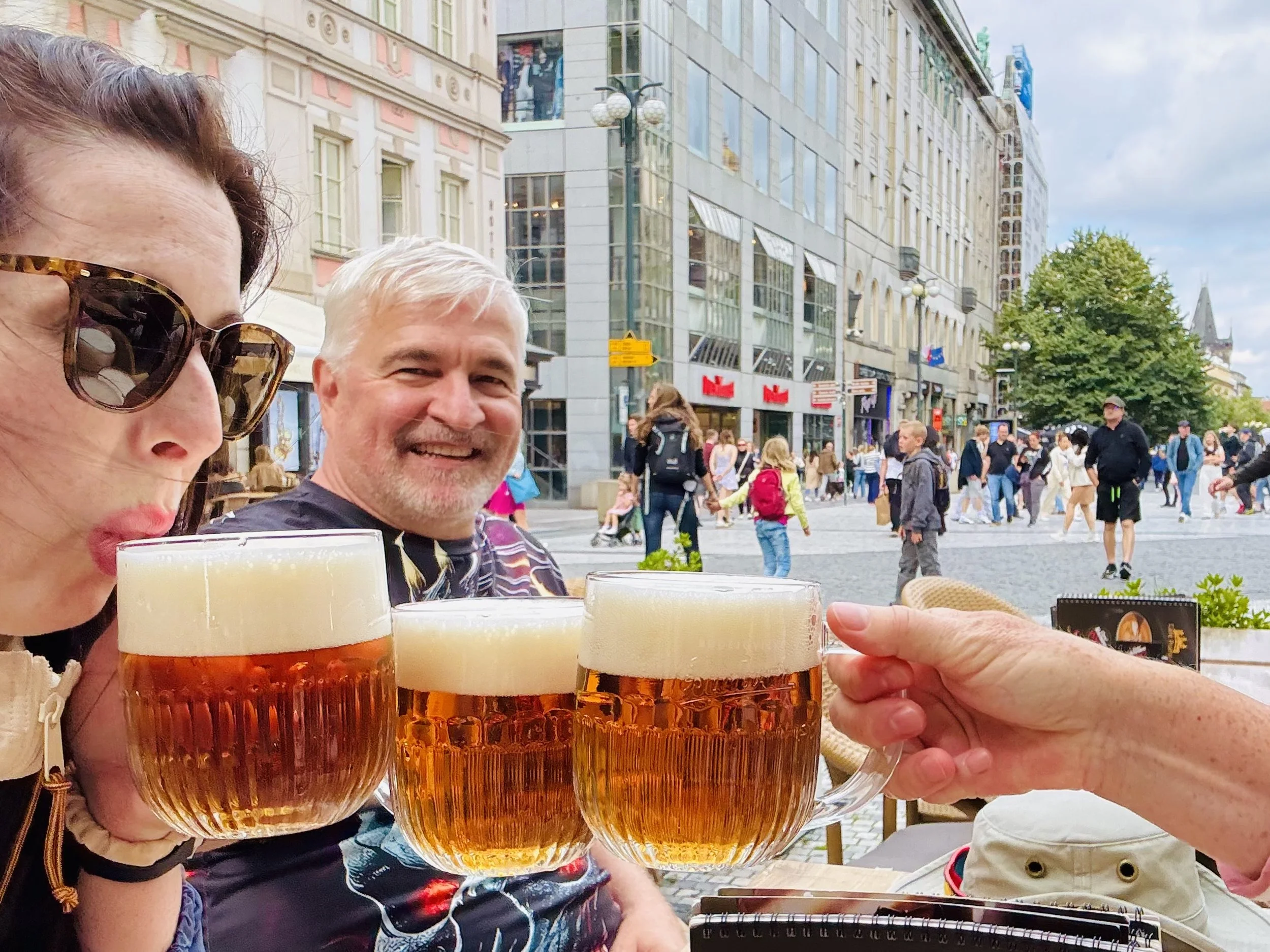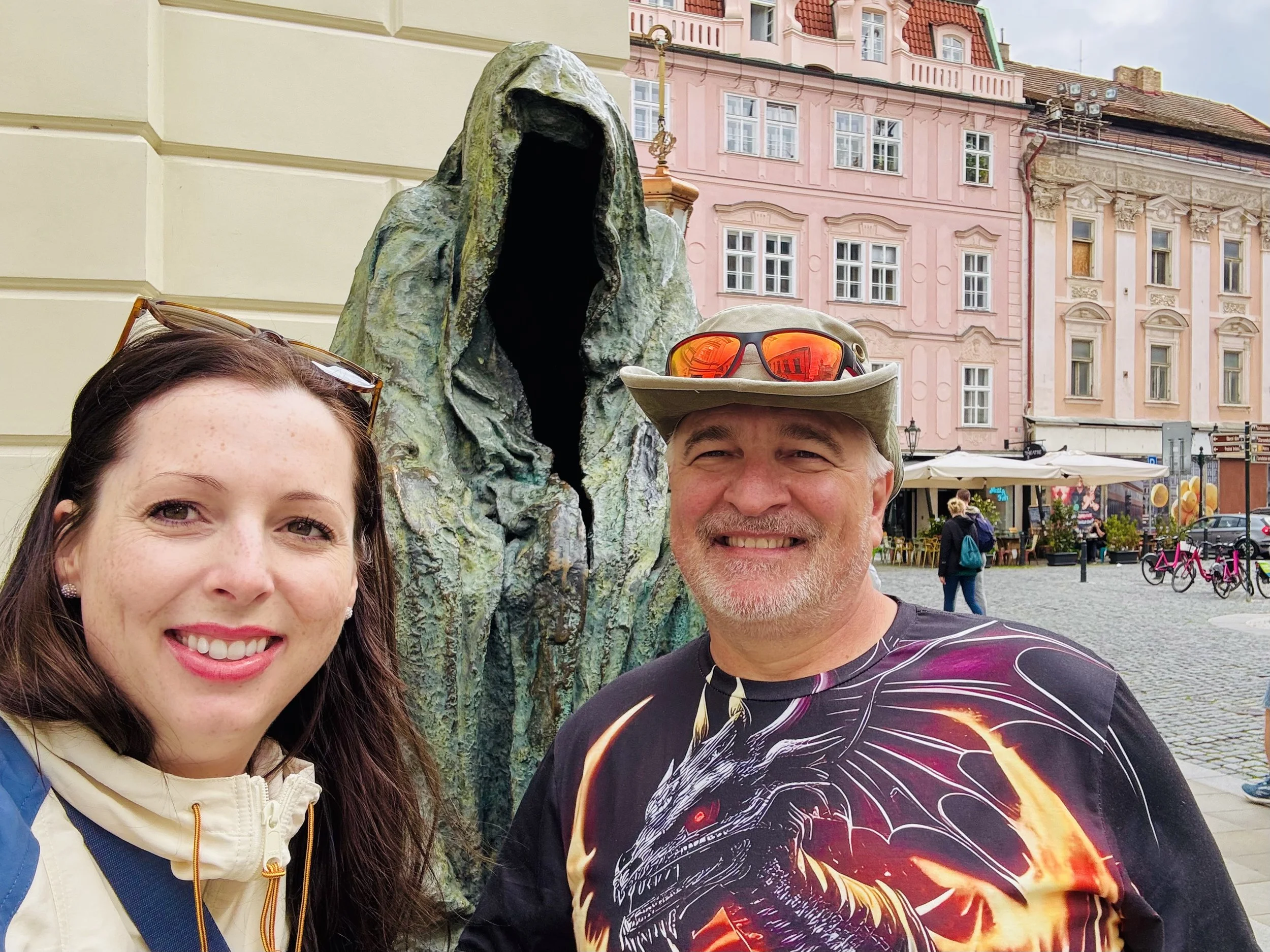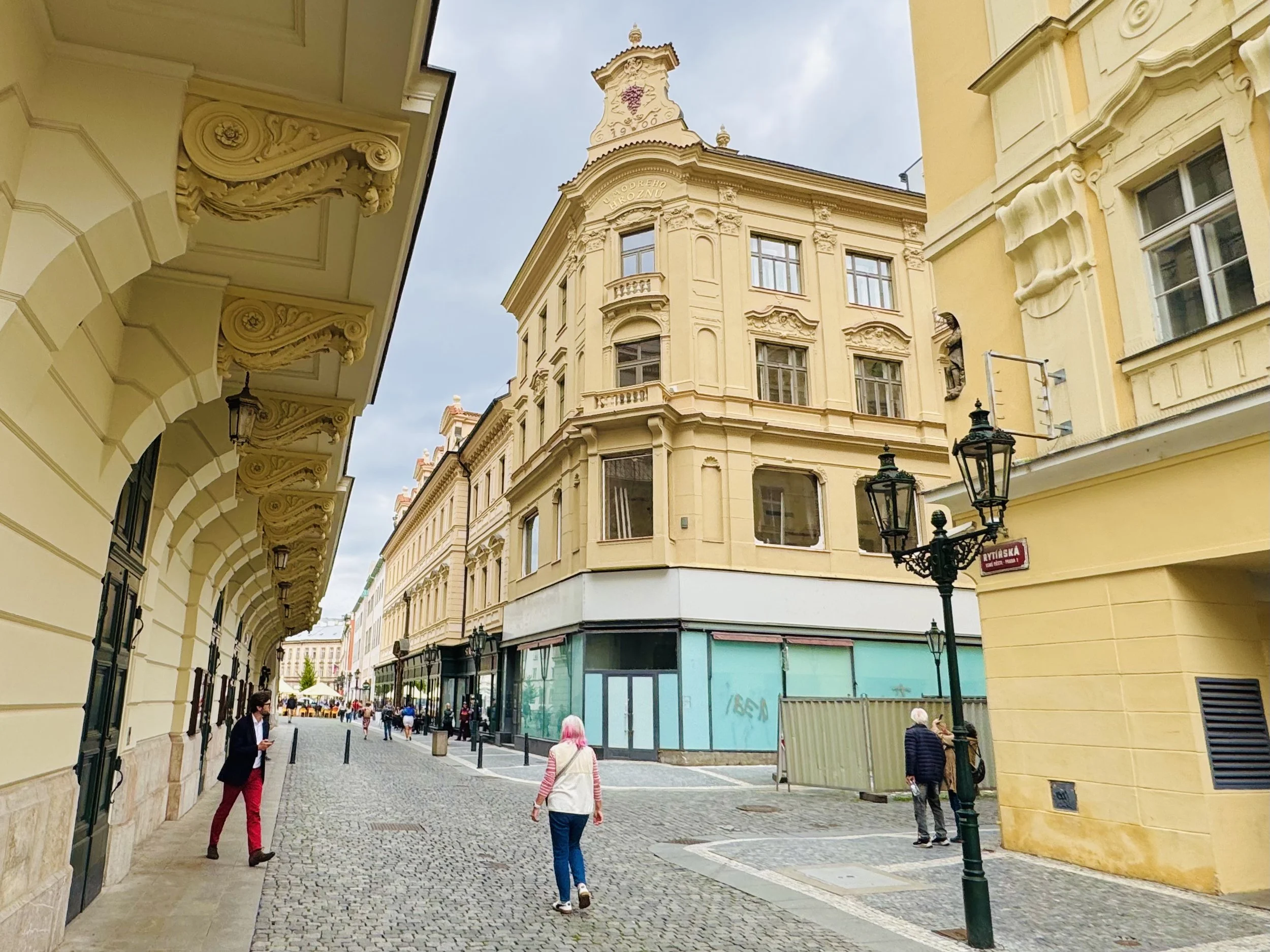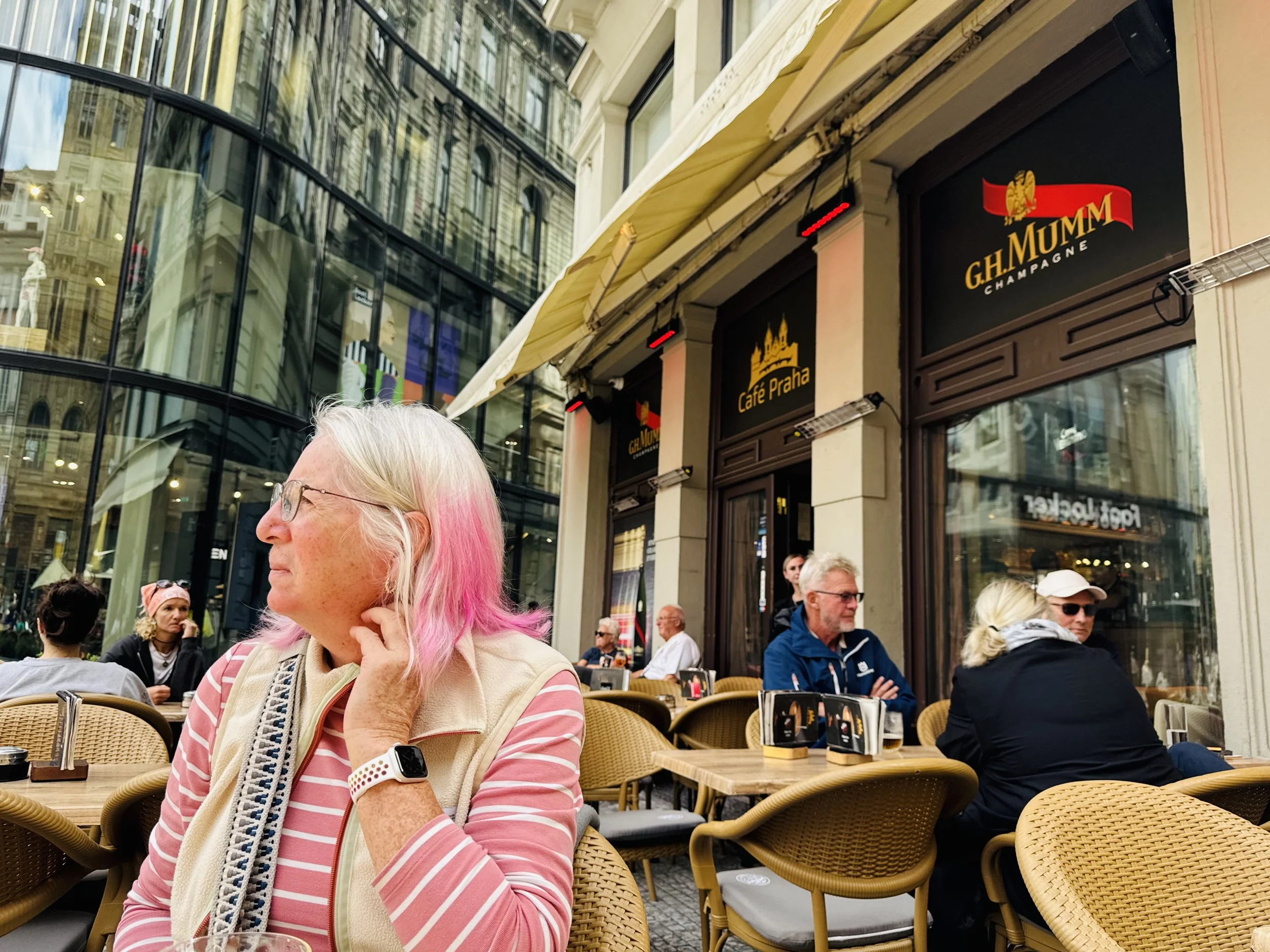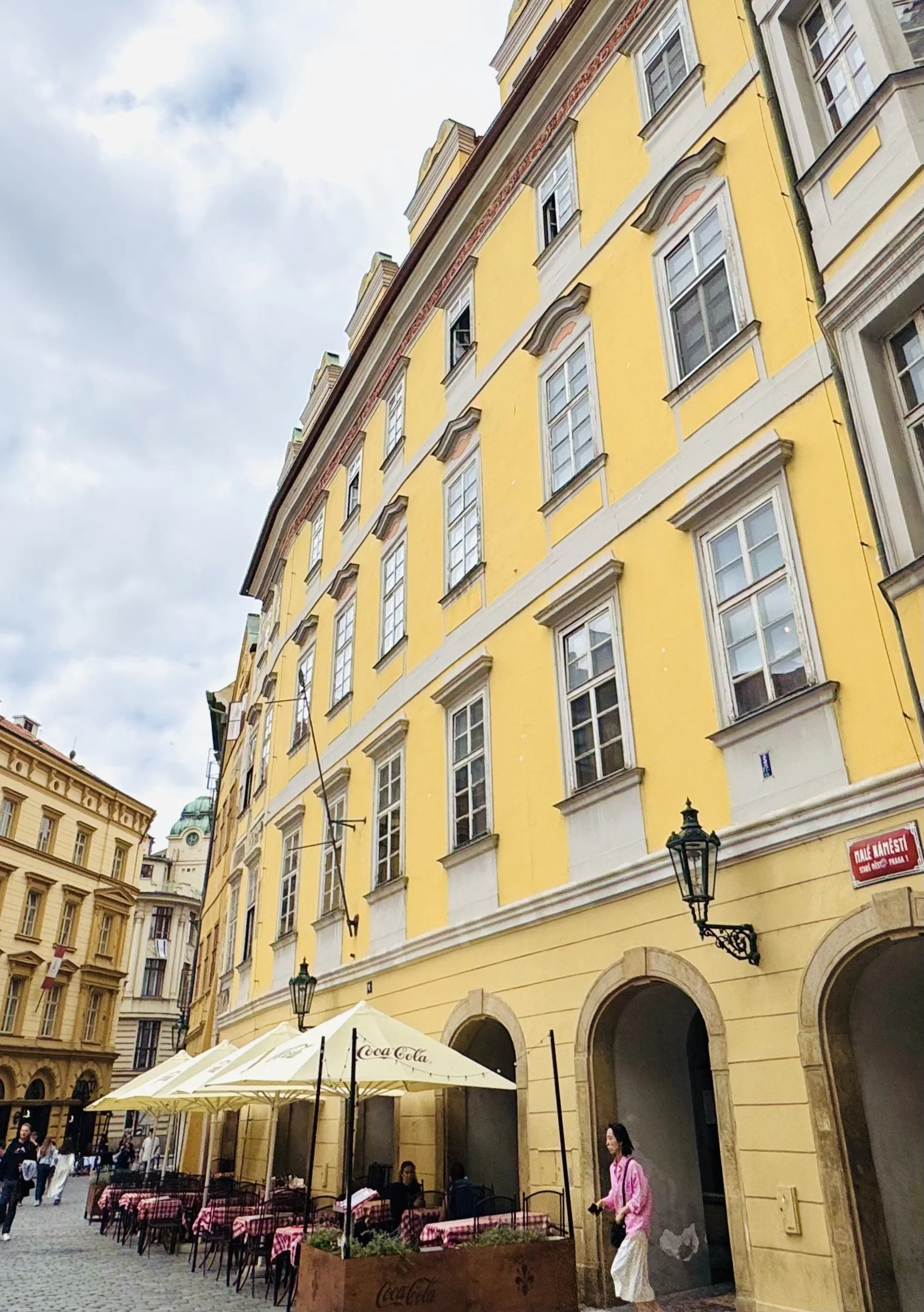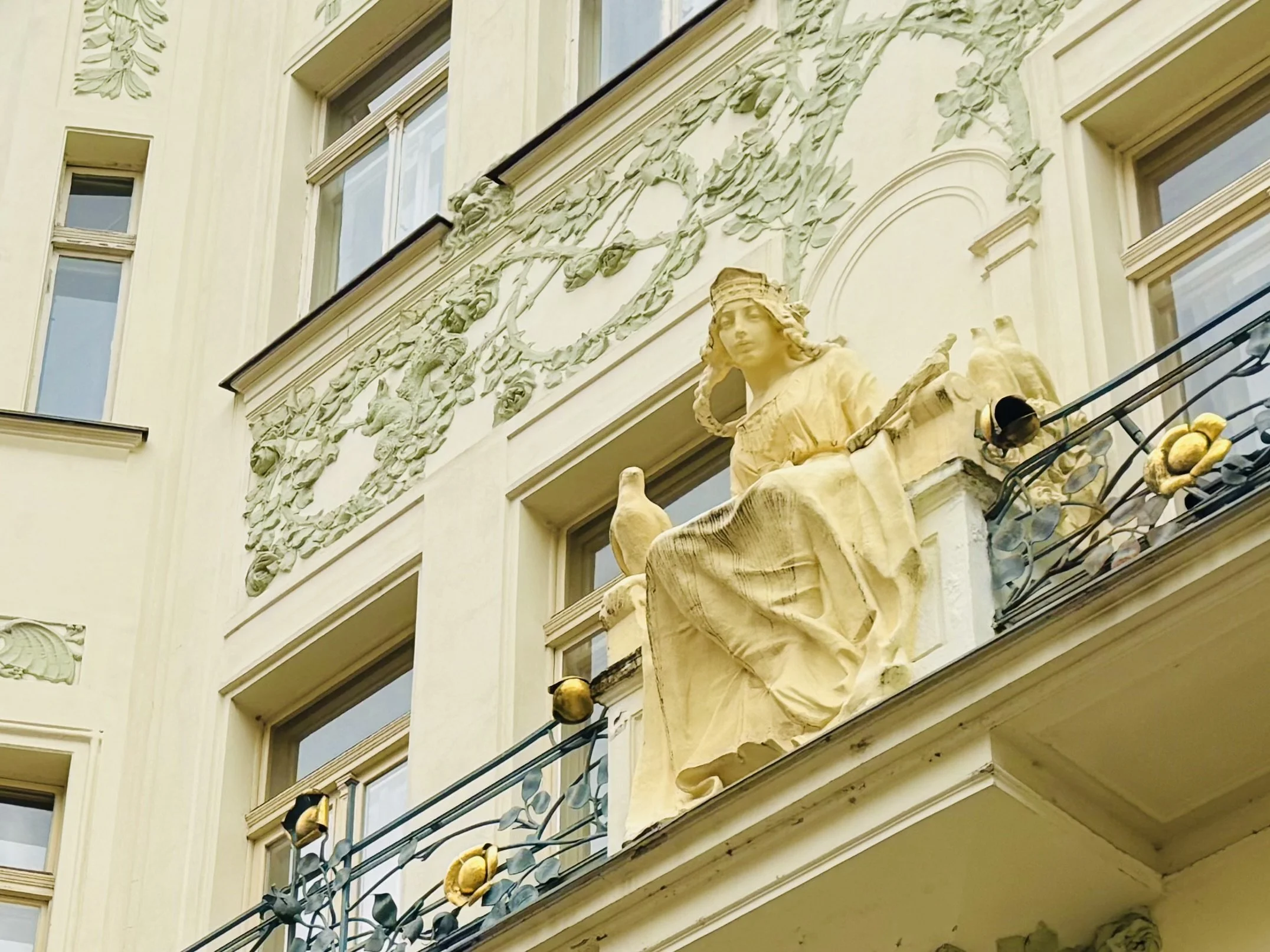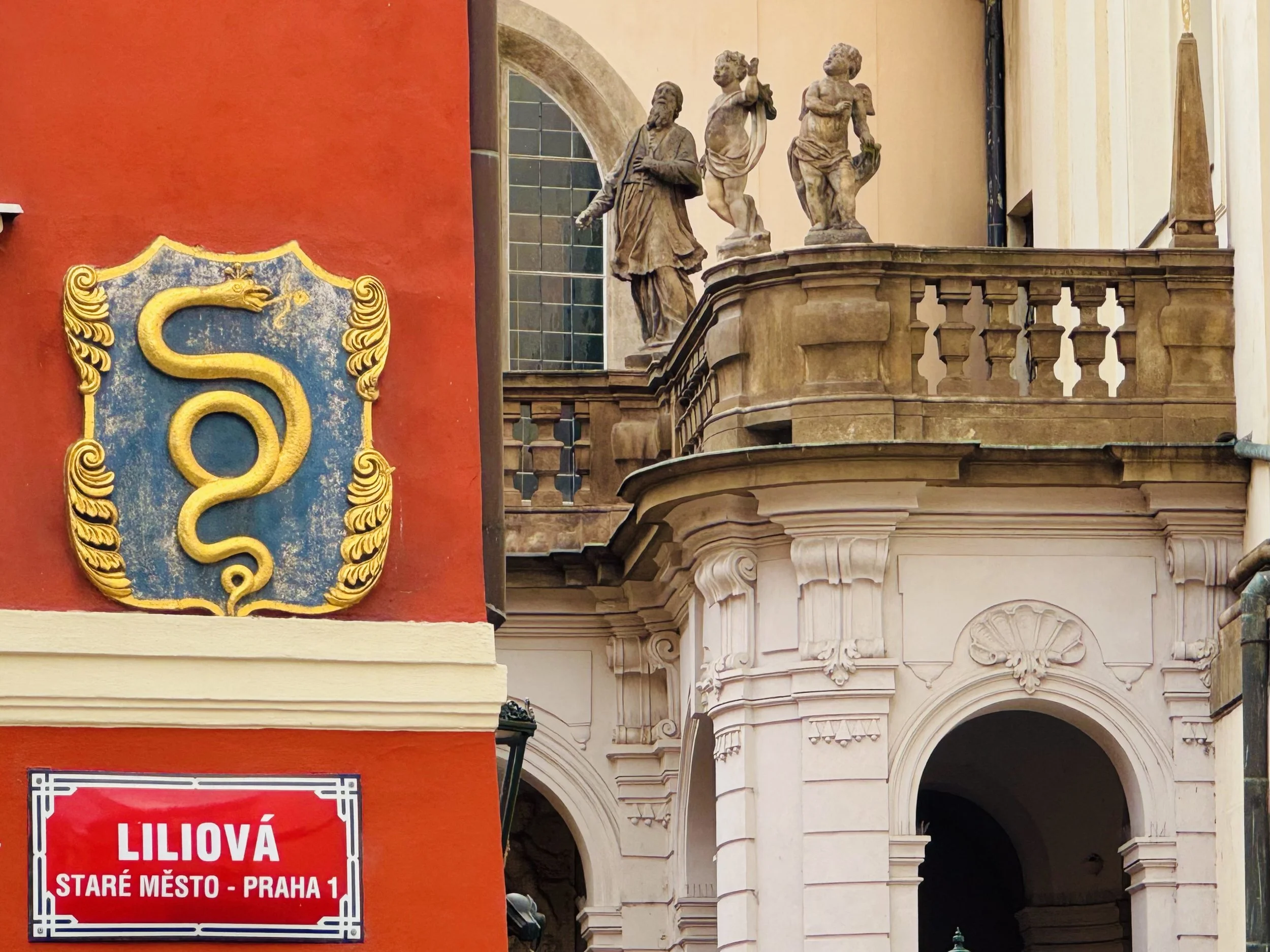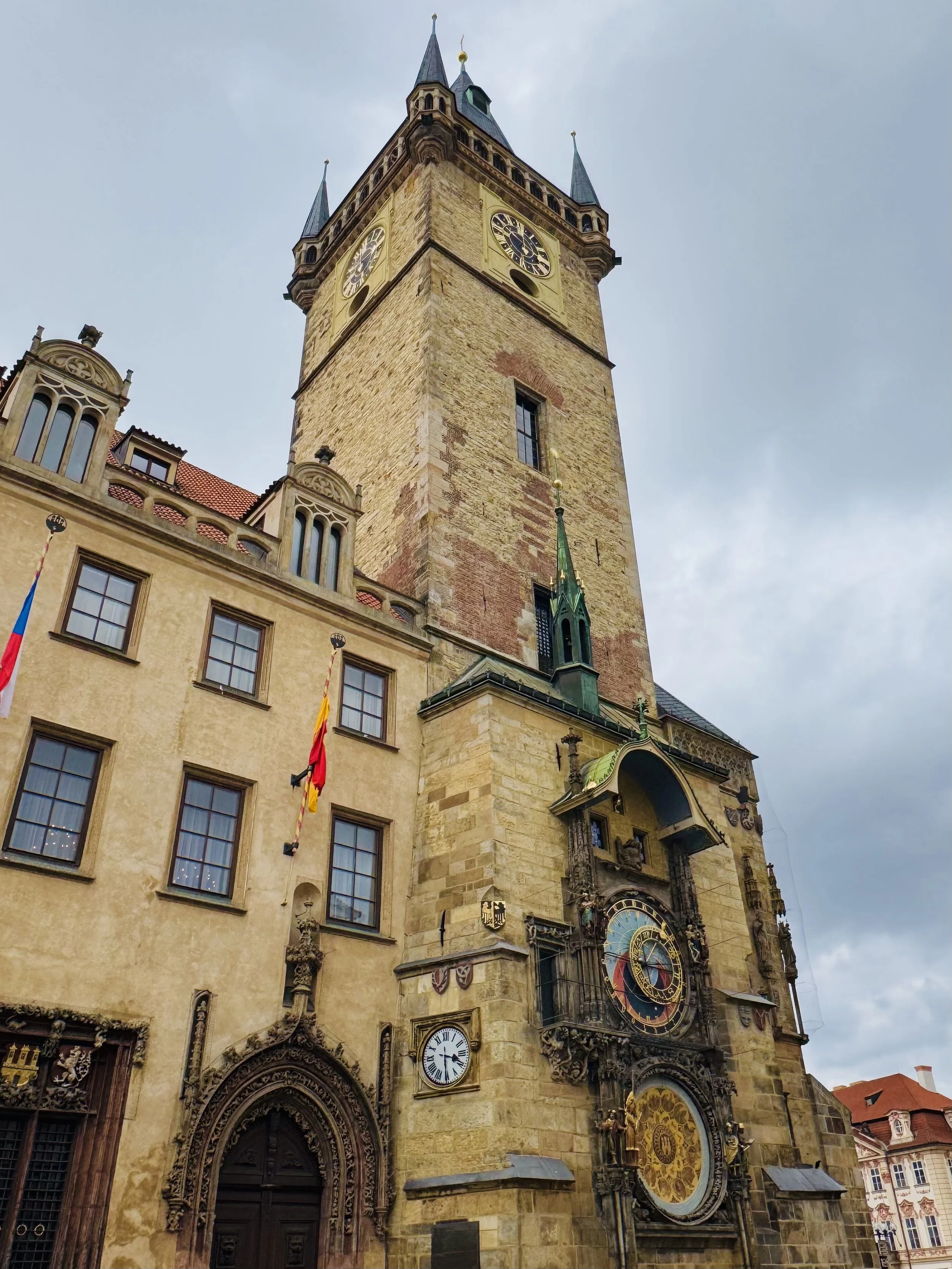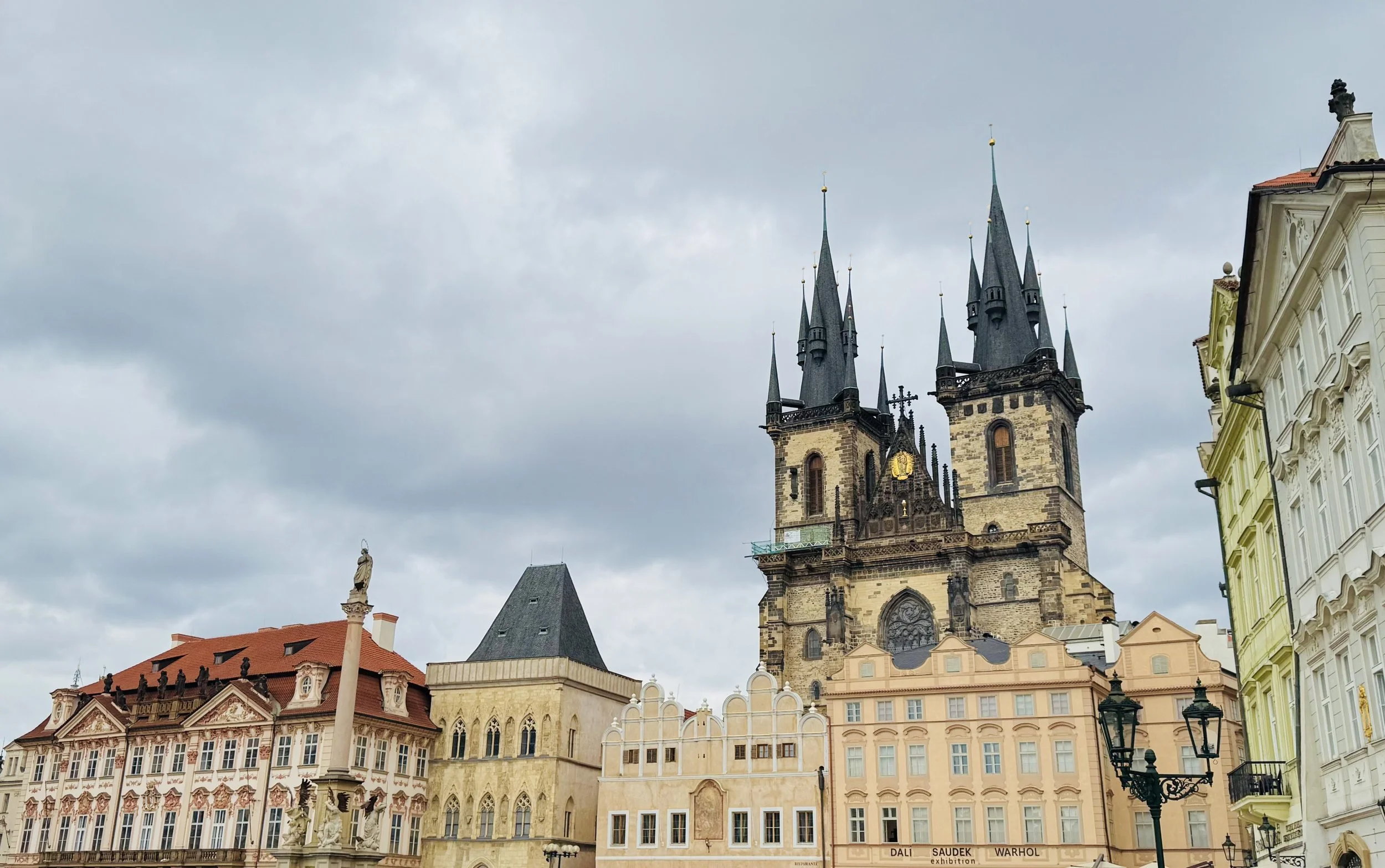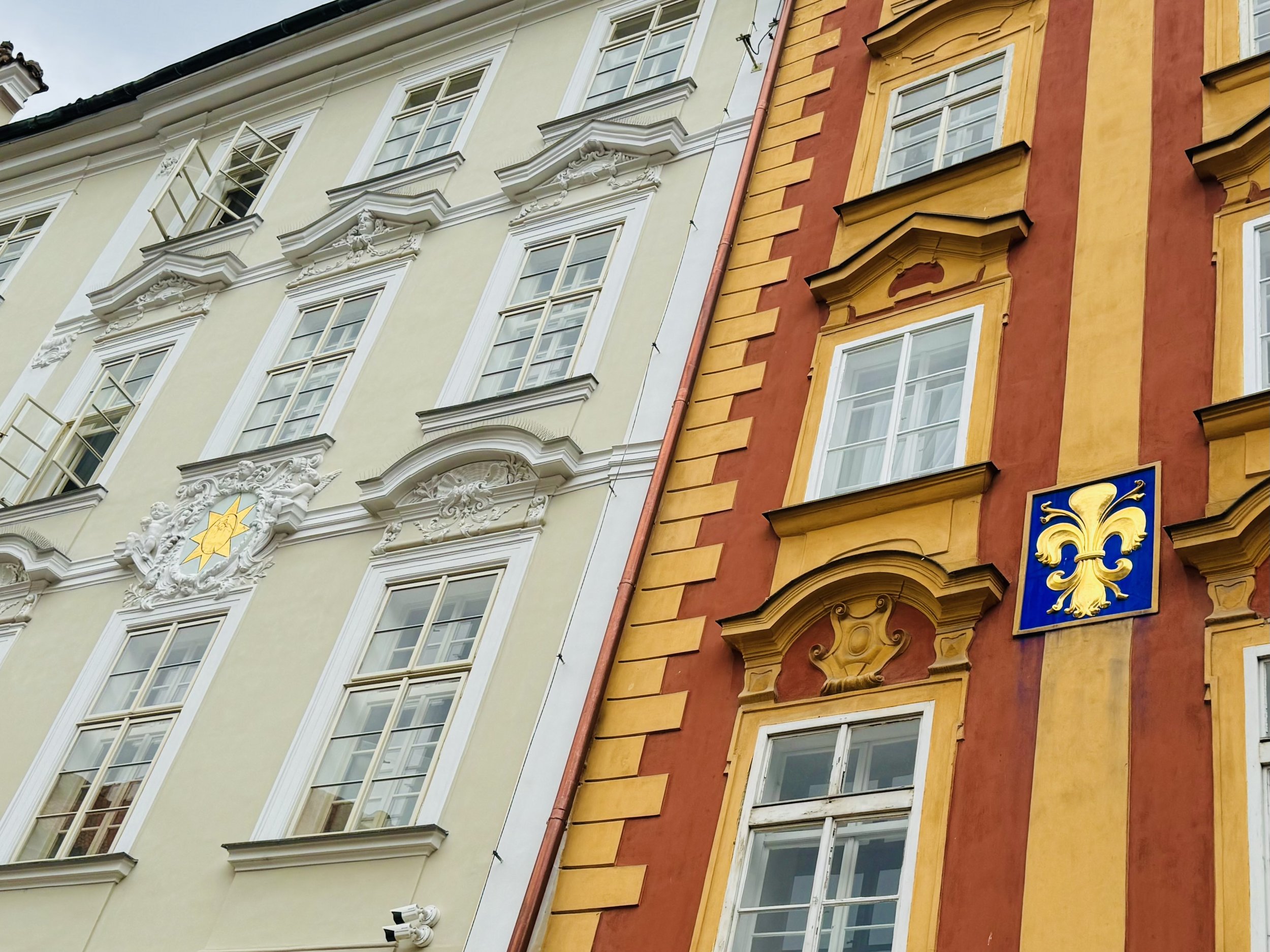1. Arrival in Prague
August 3 – Departure from Ottawa (& Packing SNAFU)
Let’s just start by saying I made excellent packing lists. Multiple categories. Subcategories. The problem? I didn’t actually look at it while packing. Not once. Which is how I ended up at the gate without a neck pillow, silently contemplating my own betrayal.
$79 later, I’m the proud owner of an overpriced travel pillow that feels like hugging a memory foam bouncer. Worth it? Undecided. But I have regrets to spare.
Taking bets on what else I may have forgotten…
At the Ottawa airport, I tell my travel companion, aka Mom, that I’m hungry. So she says, “Let’s get sushi.” I say, “What??” Sushi at an airport? That’s not a meal—that’s a dare. I ate something bread-based and safe. Think we’re built different.
Fast forward to Toronto. We meet up with our third musketeer Rod, who instantly restores order by handing me a beer. First beer of the trip. Tastes like victory. Tastes like a memorial holiday.
August 4 – Arrival in Prague
After a comfortable and quick flight, we land in Prague just before noon and hit immigration, where we quickly learn that no one around us has ever crossed an international border before. People are baffled. There are signs. There are machines. There are border agents. The process is literally the same in every country with functioning electricity—but nope. Everyone’s treating it like it’s the first task in the Amazing Race and the stakes are neck pillows.
Side note: the Czech border agent—a very handsome young man—charmed me and told me I had a very nice passport…
Eventually, our trio pod made it through to meet our Uber, bags in hand, half-conscious and 100% ready to walk it off with some good old-fashioned jetlag denial.
Our Airbnb in Praha 4 was tucked into an urban residential block, just far enough from the downtown core chaos to exhale but close enough to walk ourselves right into the story.
And so we did—with that post-flight 9km walk that my mom planned.
The real adventure begins now!!
Reminder to click on the photos to see all of them!!!
We started the afternoon heading toward Kampa Museum, drawn by the sculptures before we even hit the gallery. David Černý’s “Crawling Babies” were impossible to miss—massive bronze toddlers on all fours, faces replaced with barcoded slits. Creepy? Completely. But also brilliant. Prague doesn’t hold back when it comes to mixing beauty with a punchline.
From there, we wandered past Lichtenštejnský palác on Malostranské náměstí—one of two former Liechtenstein palaces in the city. The facade is pure Habsburg drama: stately, baroque, heavy with imperial ego. Centuries ago, this was the Prague seat of the Princely Family of Liechtenstein—yes, those Liechtensteins. One of Europe’s richest dynasties, quietly owning more than just a postage-stamp-sized country.
Then we turned down toward something far more rebellious: the John Lennon Wall.
This wall started out under a very different name—Lenin Wall—back when Prague was still under communist rule. Then something beautifully cheeky happened: students began graffitiing it with Beatles lyrics, peace signs, and Lennon portraits, reclaiming the space with colour and defiance. The regime kept painting over it. The people kept coming back. Today it’s a swirling mess of stickers, slogans, spray paint, and hope. It’s never the same wall twice.
The Lennon wall was probably my favourite part of the day. It was beautiful and full of artistry, history, and resistance.
And then it was time for caffeine and alcohol, preferably mixed. We settled on Velkopřevorský Mlýn—a postcard-perfect pub tucked behind the Lennon Wall, right on the canal, with an ancient wooden mill wheel spinning lazily beside us like it had nowhere better to be. The kind of place that makes you want to exhale and eat something handmade.
We sit down. First Czech pub of the memorial papa trip. Big moment.
And then—the waiter comes by.
Cash only, he says !!
I blink. Mom doesn’t. She just stares at me, eyebrows raised to full judgmental altitude.
“I told you,” she says, already deep into smug mode. “Bring cash.”
“Who even uses cash anymore?” I shot back.
Rod, to his credit, is just sitting there with the world’s biggest grin.
Mom keeps going. “Looks like you’ll be going hungry or doing dishes.” Loudly. For the whole patio to hear.
In the end, one of us had cash (not me), and the kitchen kept its dignity.
We ordered grilled klobása—a gorgeous sausage, sliced open and stacked with mustard, horseradish, crunchy onions, and chopped chives. On the side: sharp pickled onions, shaved horseradish that could wake the dead, and pickles with just the right kick. We also grabbed an open-faced pork spread sandwich (think pâté but bolder), piled with red onion, hot peppers, and the kind of rye bread that deserves a medal.
Beer arrived—cold, golden, Czech as hell.
I finished mine. Mom took three sips, made a face like she’d licked a pinecone, and slid hers to Rod, who didn’t even pause before polishing it off.
“Lightweight,” I muttered.
We left the mill and beer behind and headed east—straight onto Karlův most, the Charles Bridge. And listen: I thought I was just going to walk across a bridge. Maybe snap a photo. I was not prepared for a full-on baroque catwalk of saints, martyrs, and deeply dramatic stonework.
But first—the bridge itself.
Charles Bridge is the most famous bridge in Prague, and for good reason. It was commissioned in 1357 by King Charles IV (yes, the same guy who turned Prague into the medieval powerhouse it was), and for centuries it was the only way to cross the Vltava River. It connected Prague Castle on one side to the Old Town on the other—and basically made the city function.
It’s also superstitiously built. The exact date and time of the foundation stone was chosen by royal astrologers: July 9, 1357 at 5:31 AM, forming a numerical palindrome (135797531), which apparently brings stability. Because of course it does.
But here’s the kicker: the statues.
There are 30 of them, added between the 1680s and 1714, when Baroque was having a full-blown artistic meltdown across Europe. Each statue is some combination of Catholic, creepy, and extra. Most are copies now, with the originals living in museums, but they still pack a punch in stone.
We started from the Lesser Town side, under the Gothic arch of the Lesser Town Bridge Tower, and made our way eastward. Here’s just a taste of what we saw (and yes I had to research all of this after the fact… when I was wondering who the hell all these people are)…
1. St. Ivo
Patron saint of lawyers, standing there like he’s judging your tax return. He’s flanked by poor people, because he was their advocate. (Guilt trip: activated.)
2. St. John of Matha, St. Felix of Valois, and the Blessed Ivan
This one? A full theatrical production. Lions, chains, captured Christians—this is what happens when a sculptor is told “do drama” and has zero chill.
3. St. Vitus
Patron saint of dancers, actors, and people with seizures (seriously). He’s holding a rooster, which makes zero sense unless you’re deep into martyr lore.
4. St. Wenceslas
Yes, that Good King Wenceslas. He’s here, sword drawn, looking very much like he knows a Christmas carol will make him famous for the next thousand years.
5. St. John of Nepomuk
The most famous statue on the bridge. He’s the guy who was thrown off the bridge (not this one—the old one) for refusing to reveal the queen’s confession. There’s a shiny spot on the base from centuries of people rubbing it for luck. I rubbed it too. Can’t hurt.
6. The Lamenting Madonna
She’s literally weeping. No caption needed. I think she felt the jetlag too.
7. St. Cyril and St. Methodius
The brothers who brought Christianity (and the alphabet) to the Slavs. Basically the Eastern European Google Translate.
8. St. Ludmila and St. Agnes of Bohemia
Badass Bohemian royal women turned saints. They did the work. The church made them statues.
And that’s just a few—we’re talking a whole holy lineup, with angels, monks, golden halos, and the occasional tortured Turk. Some hold crosses. Some have swords. Some are just straight-up judging your vibe as you walk by eating gelato.
Basically the Holy Roman Empire became a thing here in Czechia during the days of the Bohemian Kings.
Each statue tells a story, mostly involving some variation of “suffering nobly in the name of Christ while wearing robes.” It’s like a stone soap opera that stretches across the Vltava.
By the time we reached the Old Town Bridge Tower on the east side, the light was golden, the crowds were thick, and I had whiplash from trying to take it all in.
Charles Bridge isn’t just a crossing. It’s a full-on pilgrimage—with people, portrait artists, and a lot of Big Spooky Energy™️. And I loved every second of it.
We were on the 7th km of my mom’s 9km post-flight march. By this time, my brain was fried in the best way—from “sleeping” on the redeye flight, yes, but mostly from the sensory overload of walking through what I’ve now decided is the most beautiful city in Europe.
Clean. Majestic. Weird in the right ways. People actually move out of the way when you walk. No one tried to sell me a knockoff purse or lure me into a questionable massage parlour. Public urination? Nonexistent. Everyone’s dog is better behaved than me. Prague is what every other European city thinks it is when it opens Instagram.
It’s nice. It’s safe. It’s livable. People are kind and respectful. In my entire first day, all I observed was good citizenry behaviour and a general feeling that everyone was welcome. Everyone belonged.
Poverty, homelessness, and addiction don’t punch you in the face unlike other big cities.
And here’s the kicker.
Our papa—Zed—told me this for 20 years.
He told me Prague was perfect. That it was elegant without being smug, proud without being loud, lived-in without being ruined. We thought he was exaggerating his homeland. We thought it couldn’t be true. He told me I had to go to see for myself.
And I never made the time to go.
Not until now. Not until he was gone. And standing there, under that Gothic tower with Rod cracking jokes and Mom looking luminous and tired and a little glassy-eyed—I just felt it. I missed him so hard I could taste it.
I wish he was here. I wish I’d listened. I wish I’d walked that bridge with him.
Well, the bridge was behind us now, but the day had stacked up in layers. First was the sign: Karlův most, Národní divadlo, Bethlehem Chapel—each arrow a breadcrumb into another fairytale.
We wandered through the Liliová district, where the buildings flirt with you. Golden snakes on red stucco. Saints perched like gargoyles. Every facade a flex. I swear even the alleyways are smug here—like they know they’re prettier than your entire neighbourhood.
One building had a statue of Justice lounging on a balcony like she’d just finished reading your texts and was unimpressed. Another had a full-on sunburst carved into it like, “Oh this old thing? I am the light of the world.”
Then we hit the Astronomical Clock—which is both amazing and wildly petty. Built in 1410, it’s like a medieval iPhone that tells time, moon cycles, zodiac placements, and your slow march toward death. Every hour, a skeleton rings a bell. Little saints come out and wave like, “Bye, sinner!” It’s beautiful. It’s haunted. It’s very Czech.
A few steps further and there it was: the Church of Our Lady before Týn, all gothic spires and blackened stone, towering over Old Town Square like Dracula’s castle decided to go to art school. I couldn’t stop staring at it. It looked like it had secrets.
And then—around a quiet bend—Rod and I stumbled on the statue.
Il Commendatore.
A bronze cloaked figure. Faceless. Hollow. Slumped on a bench outside the Estates Theatre, like grief itself decided to take a break and sit down for a while.
It’s based on the character from Don Giovanni, the ghost that comes back to drag the titular bastard to hell. The sculpture doesn’t speak. It doesn’t move. It just is—and standing in front of it hit me harder than I expected.
Because here’s the truth: it reminded me of papa.
Not in the literal sense. But in the way it sat—heavy, dignified, silent. In the way it seemed to be watching, not judging. Waiting. Holding space.
I wanted to sit down beside it. I wanted to tell him, “You were right.” About Prague. About taking the trip. About not waiting.
About a lot of things.
But now it’s too late to tell him.
I never thought I’d be here in Prague—one year after he died. Prague—without him.
We talked about doing this trip together for 20 years.
But now it’s just us, the people who loved him most. His ashes. His T-shirt. And a bottle of becherovka.
I wish I could hand him a beer and walk this bridge with him. Show him the gold-plated saints. Let him watch Mom scold me for not carrying cash. Hear him tell the story about the time he tried to sneak into a church choir tour group in the ’90s just to avoid museum fees.
But he’s not here. Just me. And Rod. And Mom. And the echo of all the stories he told me that I didn’t believe until now.
Prague is perfect.
I waited too long.
And I will never wait again for the things that matter most.
